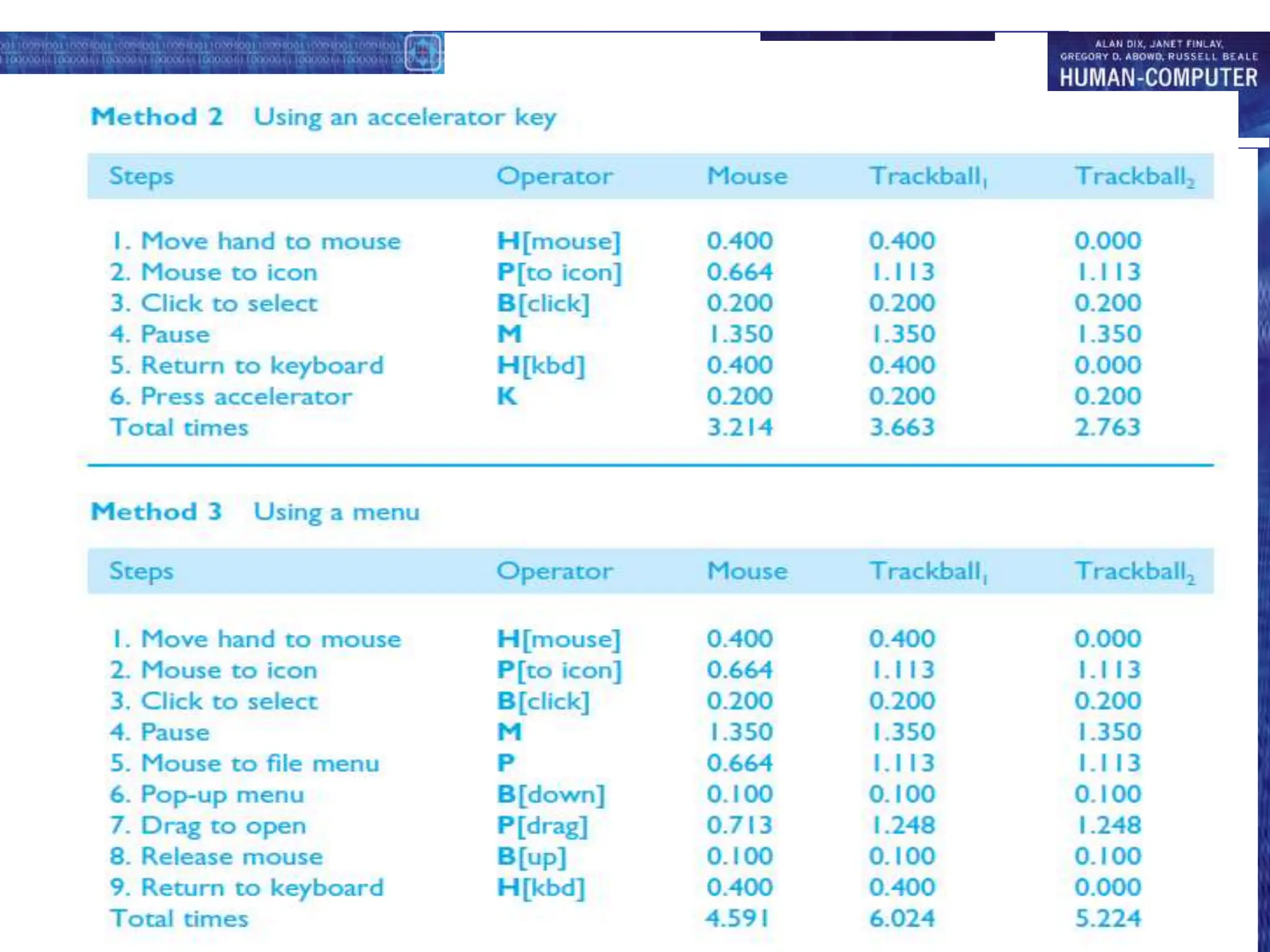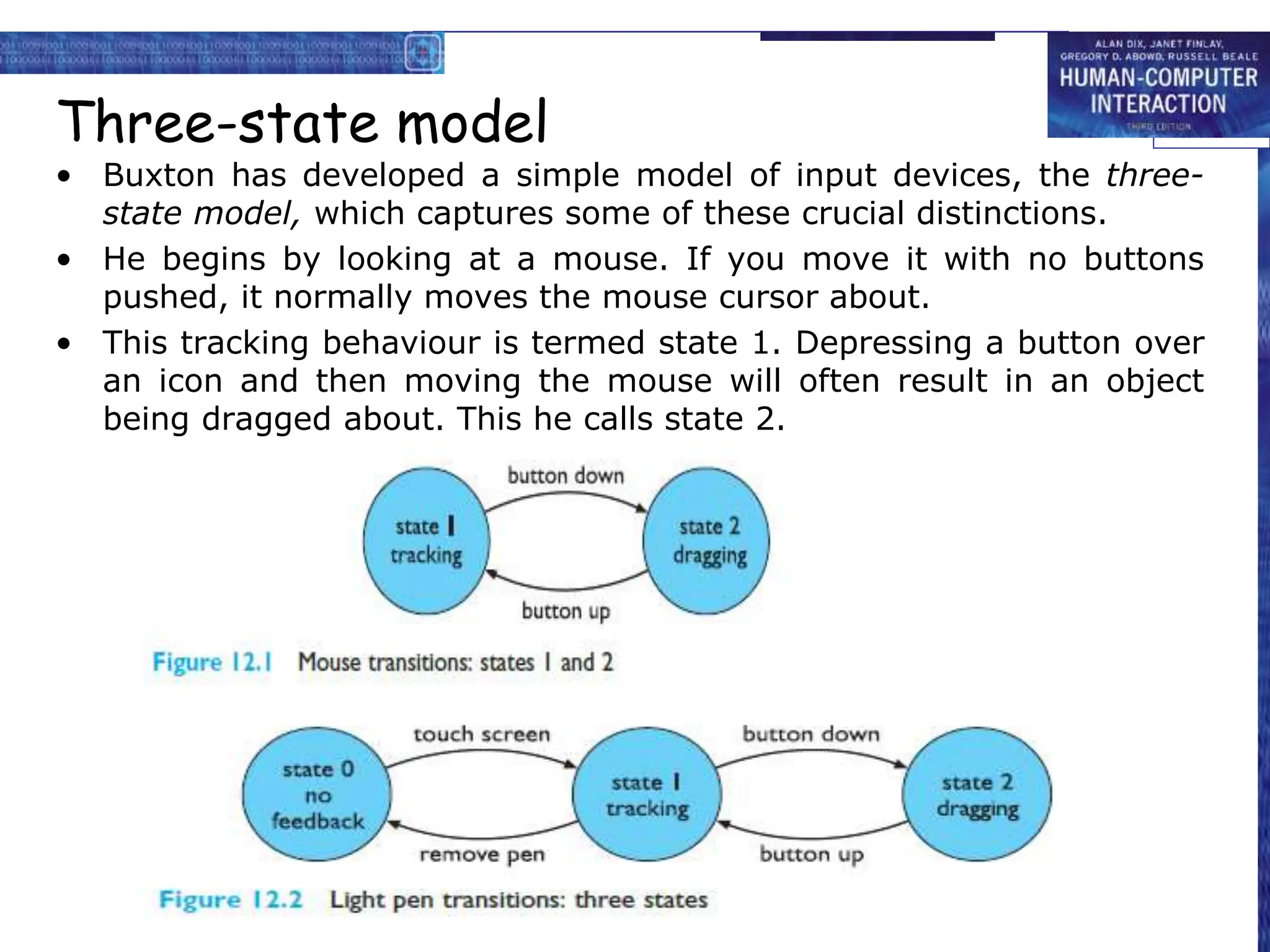This document discusses cognitive models used to represent users of interactive systems. It describes hierarchical models that represent a user's task and goal structure, as well as linguistic models that represent the user-system grammar. GOMS and CCT are two common cognitive models discussed in detail, with both modeling a user's goals, operators, and methods in a hierarchical structure. The document also covers Keystroke-Level Modeling (KLM) which uses cognitive understandings to predict user performance times for simple tasks.
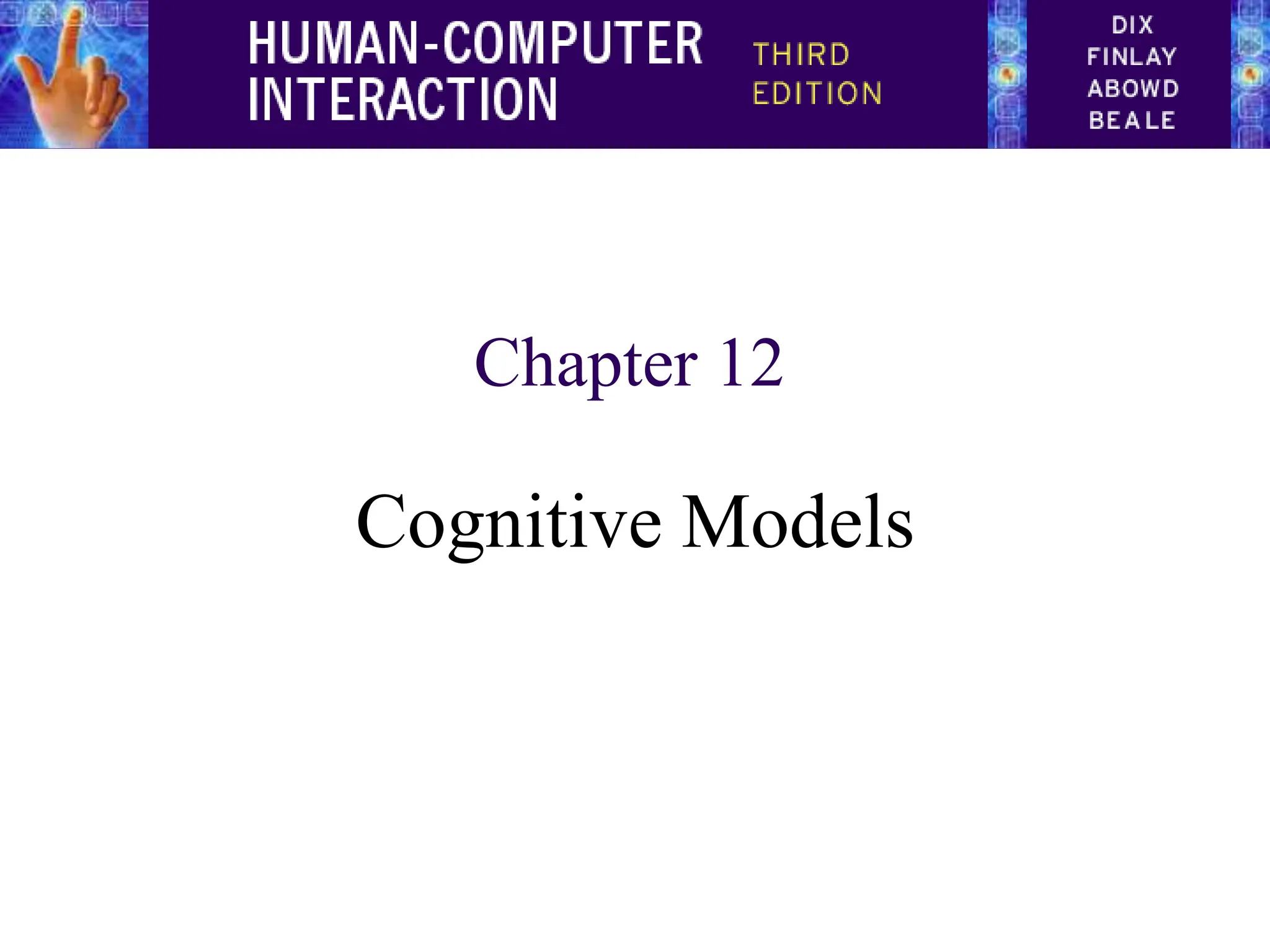
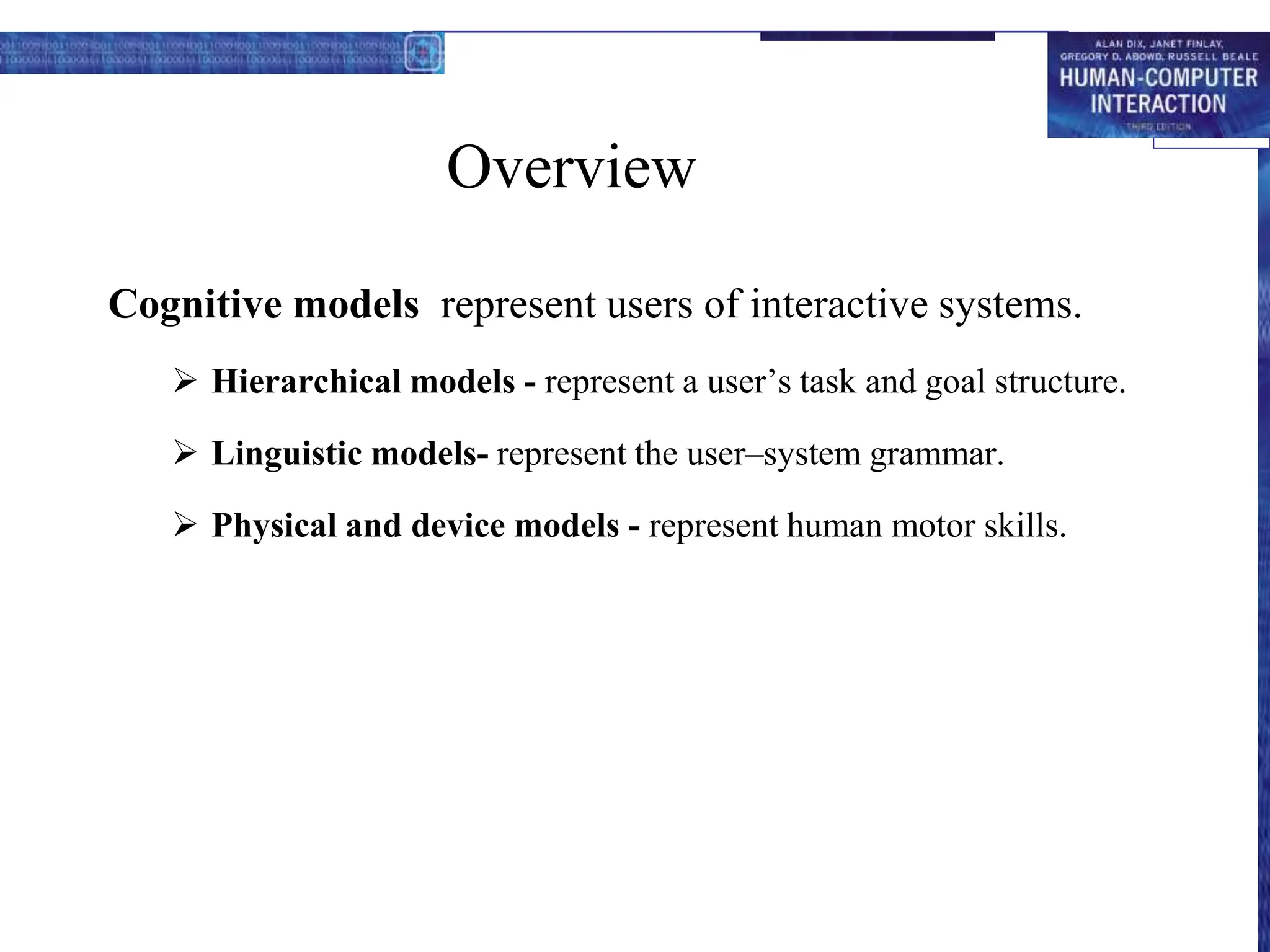
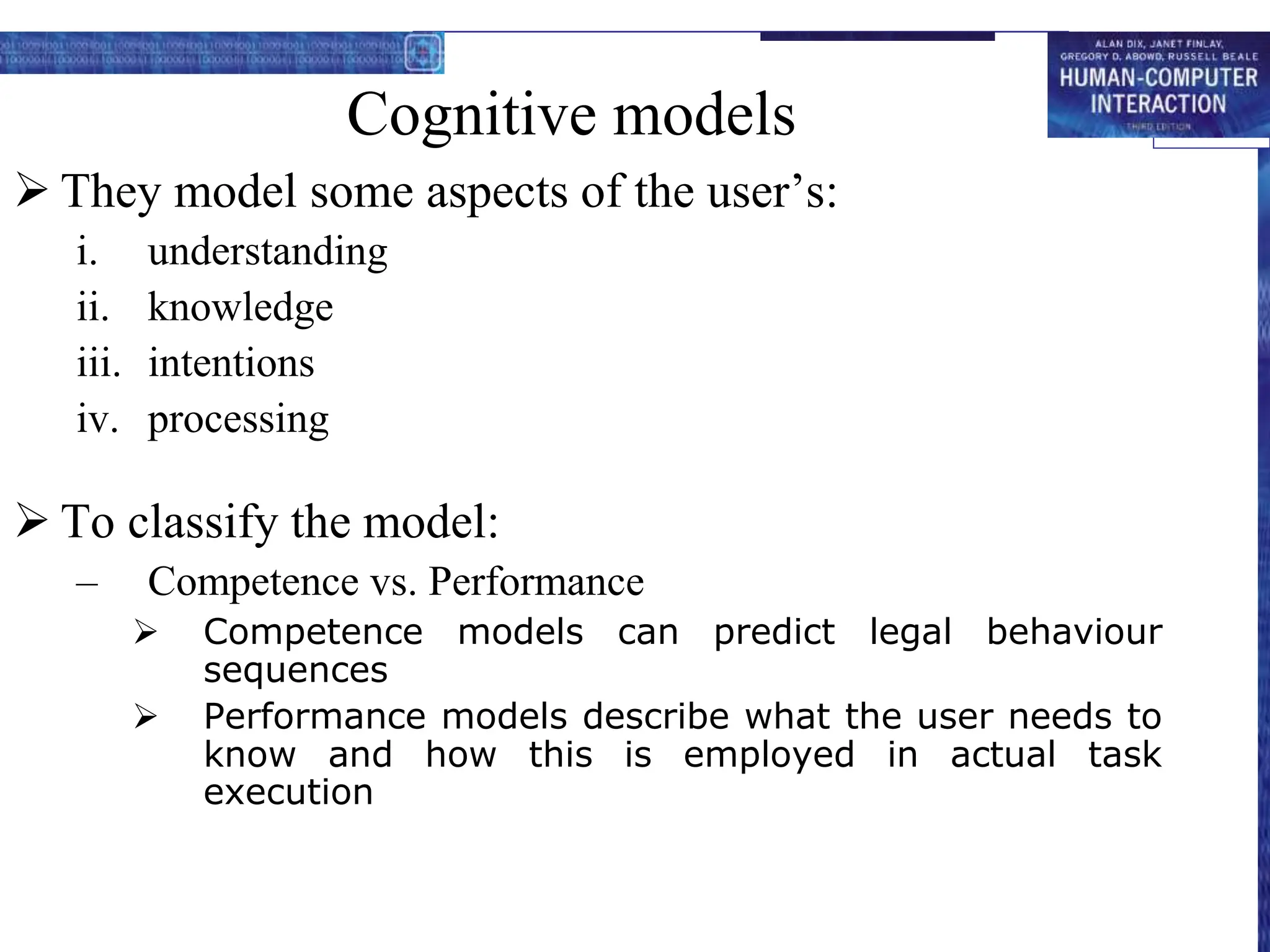
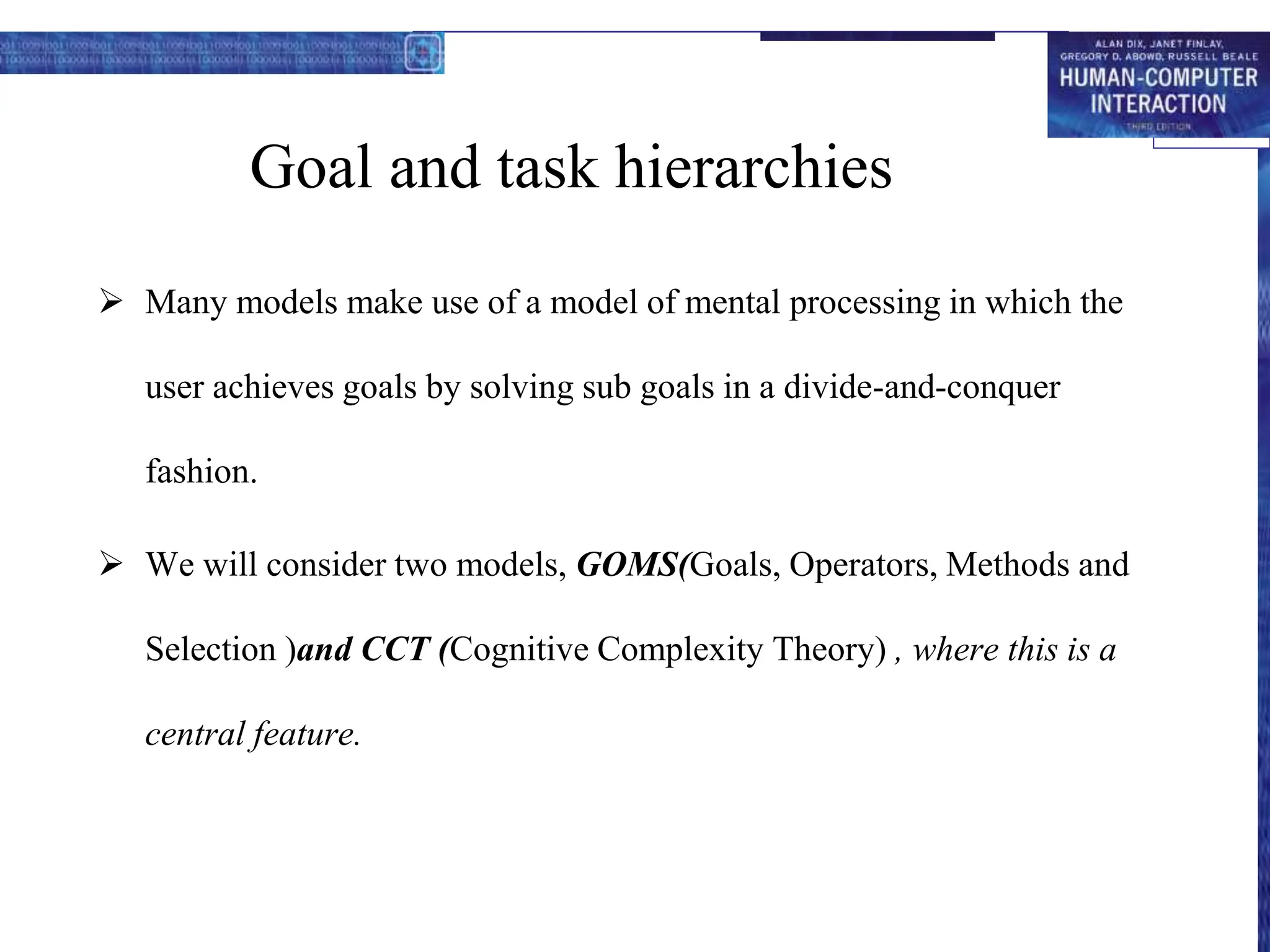

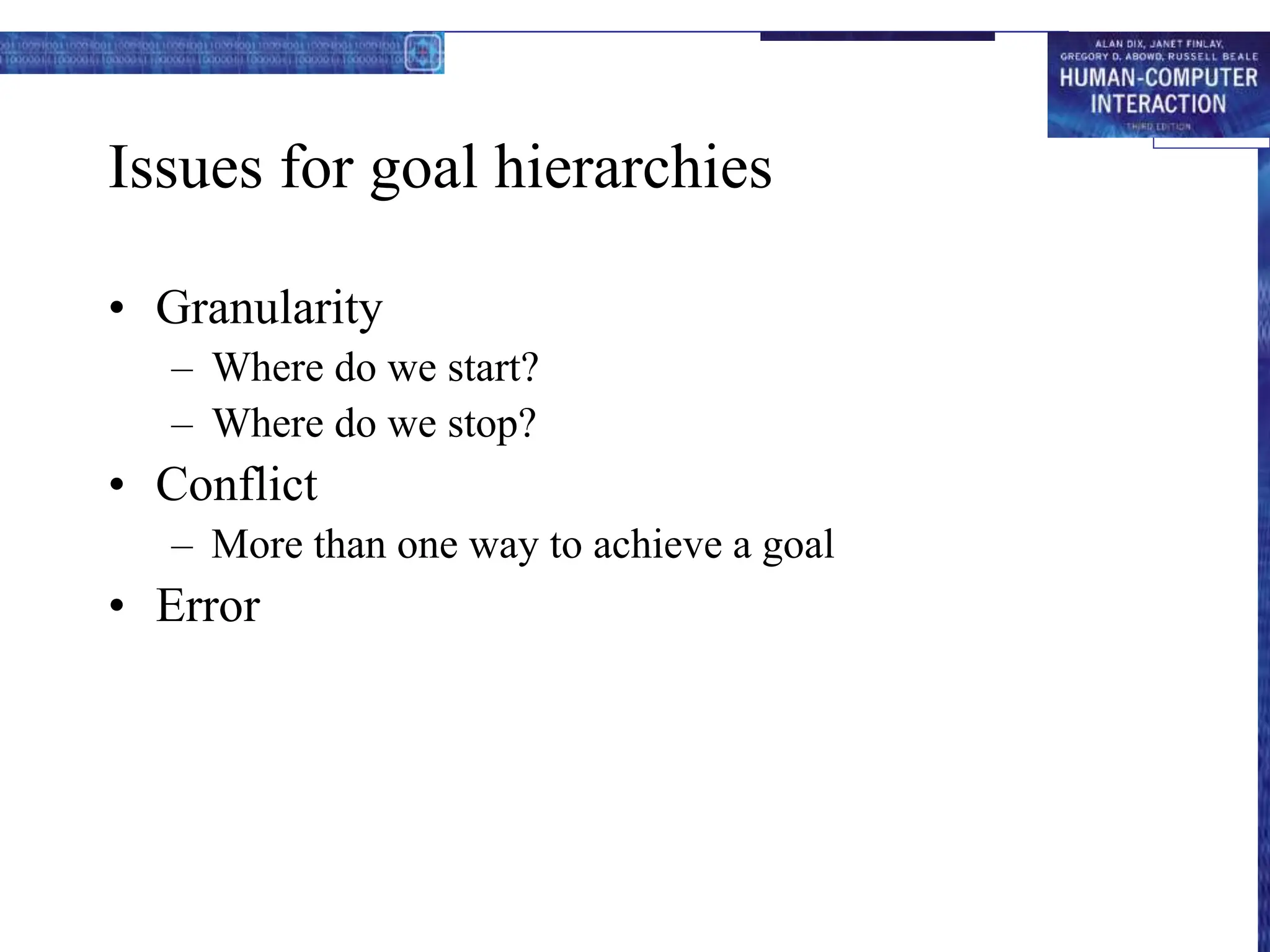
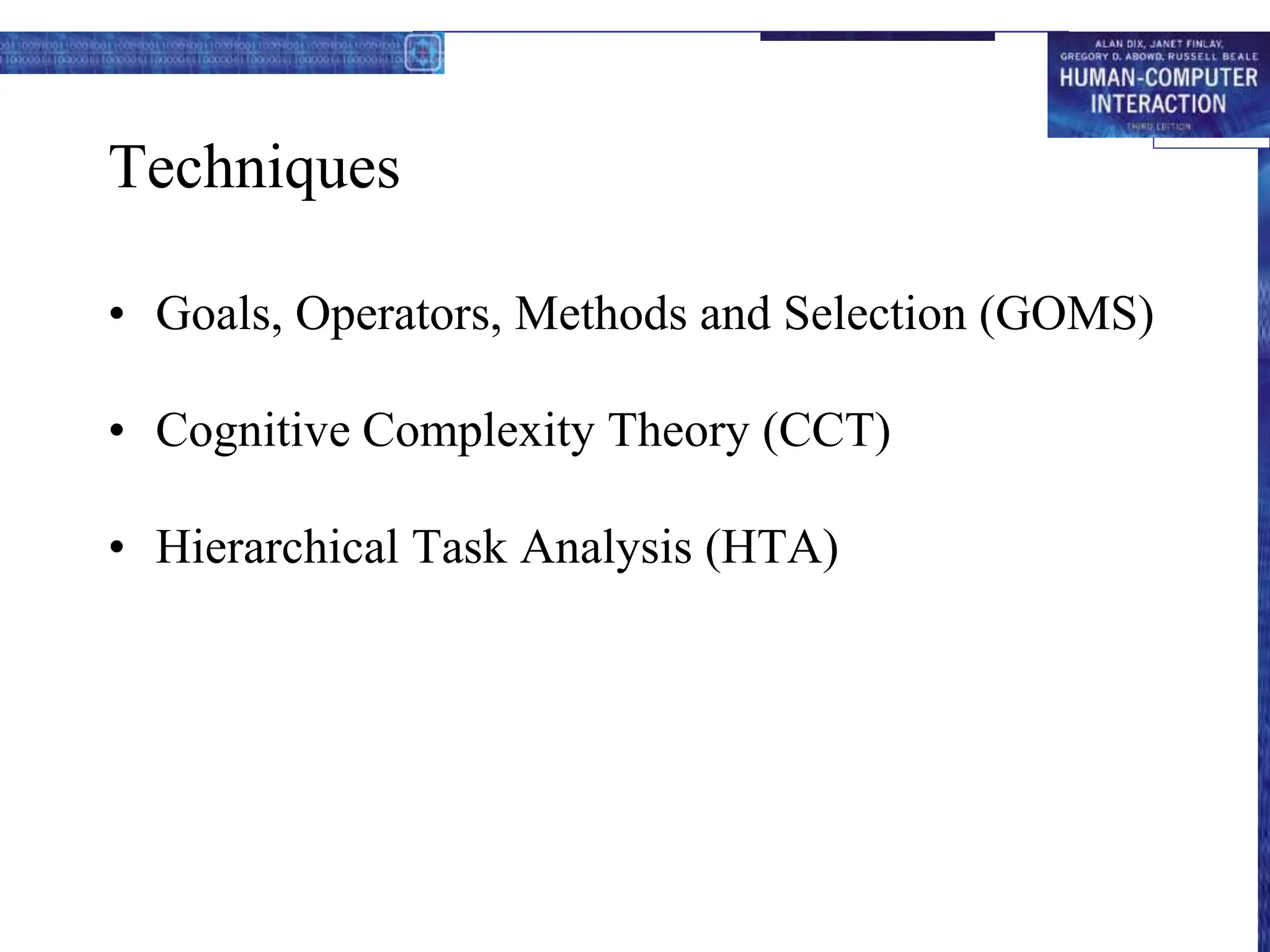
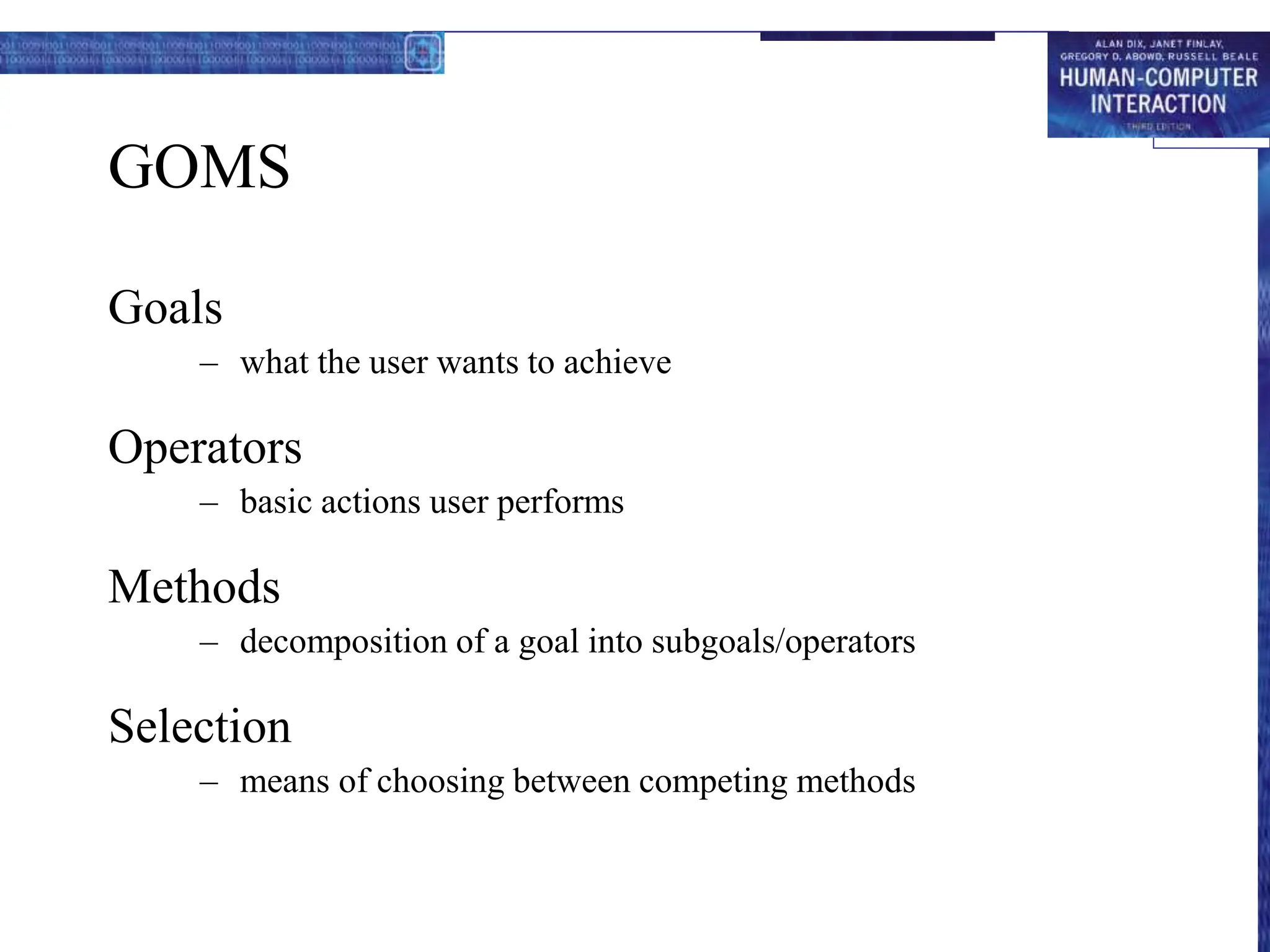
![GOMS example
GOAL: CLOSE-WINDOW
. [select GOAL: USE-MENU-METHOD
. MOVE-MOUSE-TO-FILE-MENU
. PULL-DOWN-FILE-MENU
. CLICK-OVER-CLOSE-OPTION
GOAL: USE-CTRL-W-METHOD
. PRESS-CONTROL-W-KEYS]
For a particular user:
Rule 1: Select USE-MENU-METHOD unless another
rule applies
Rule 2: If the application is GAME,
select CTRL-W-METHOD](https://image.slidesharecdn.com/cognitivemodels-240401155135-fcc91185/75/human-computer-Interaction-cognitive-models-ppt-9-2048.jpg)
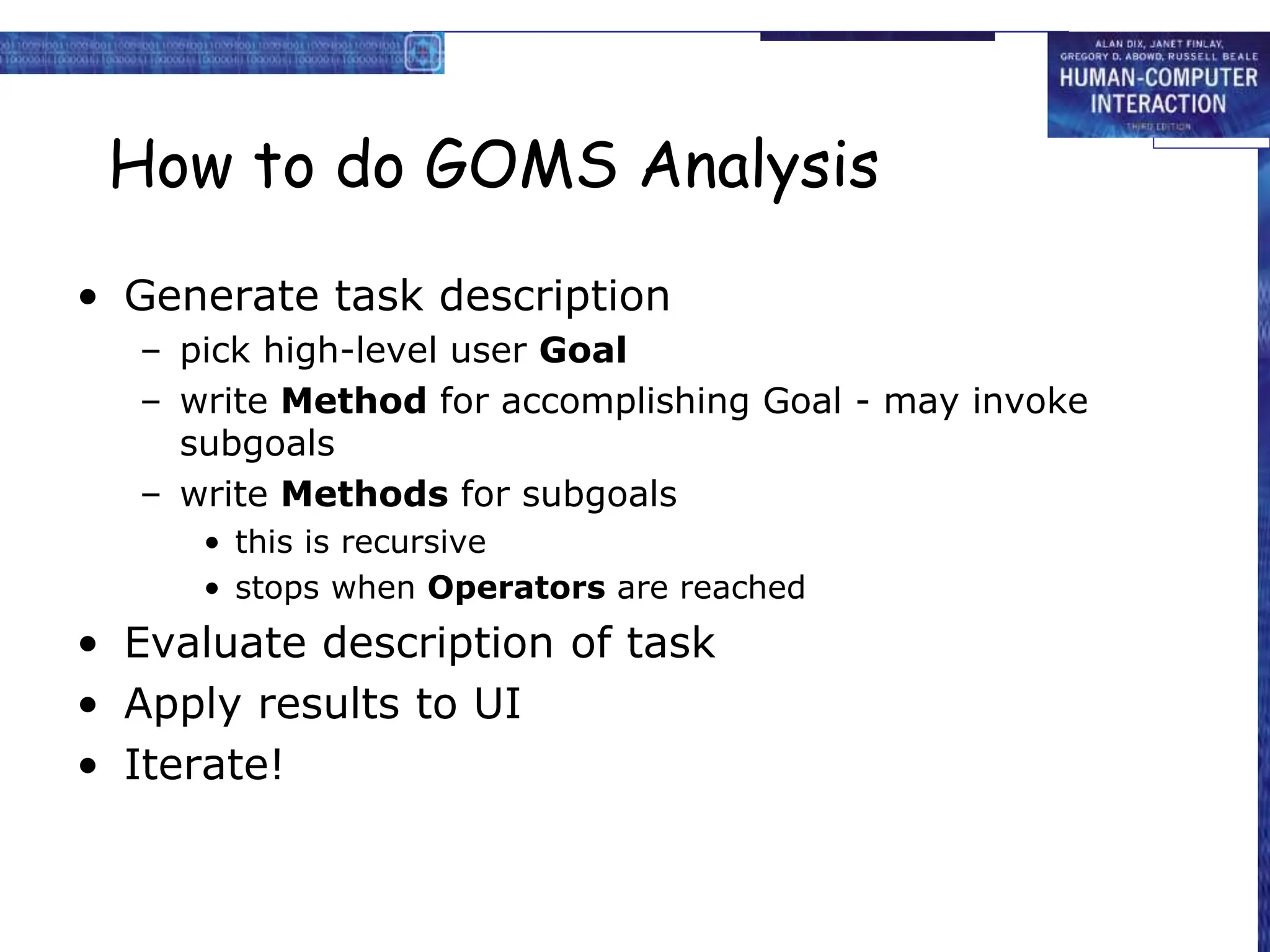
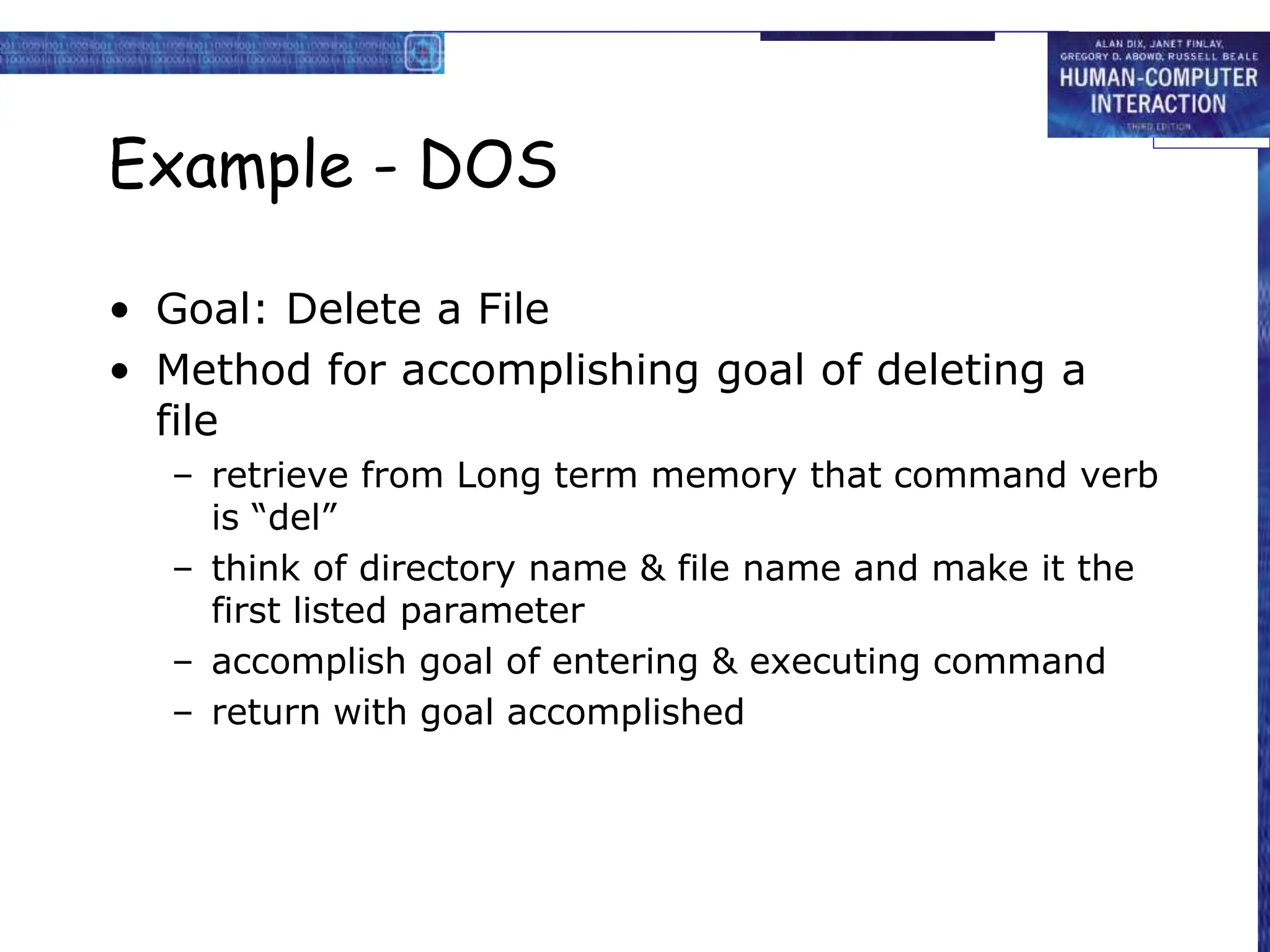
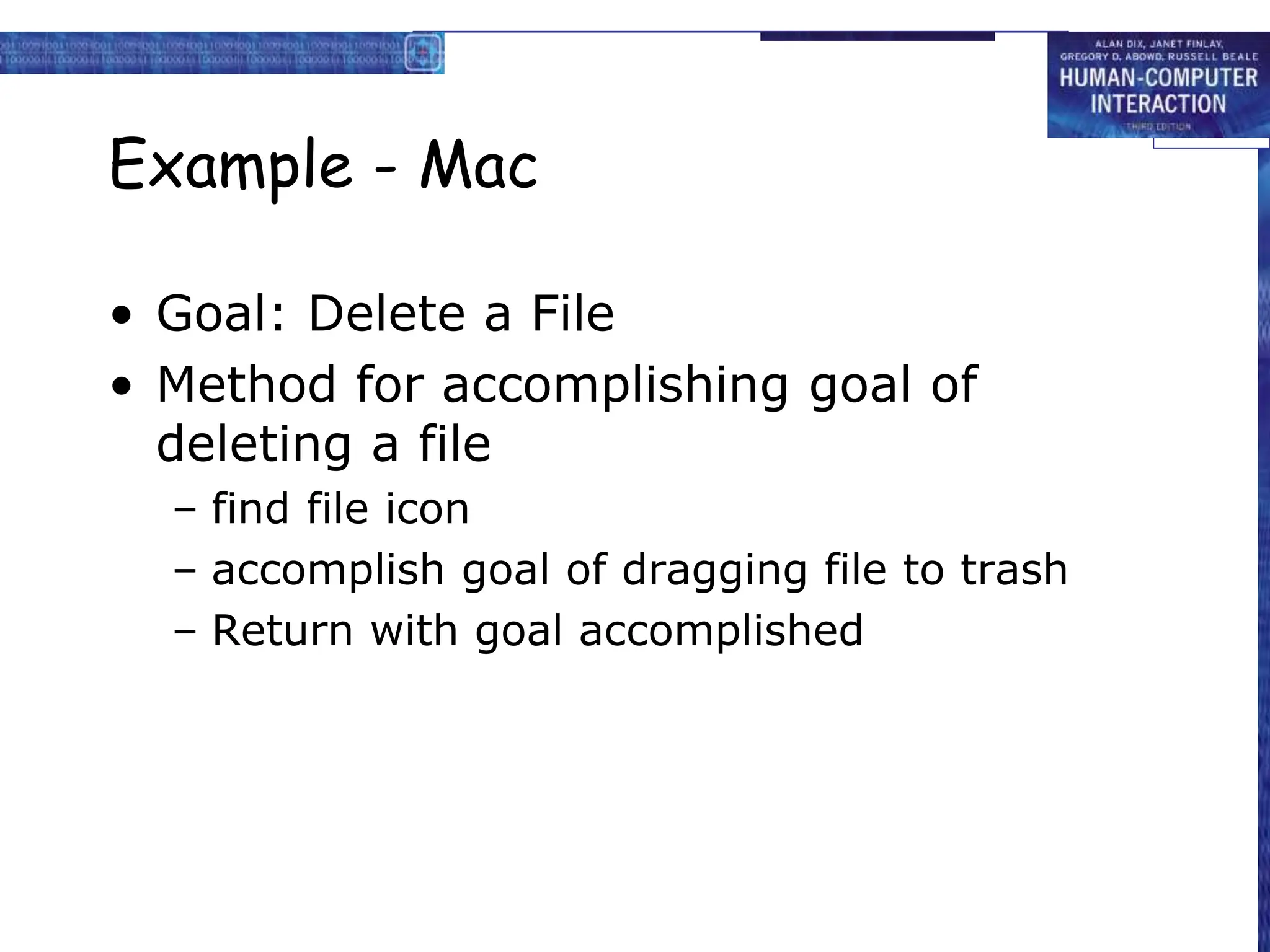
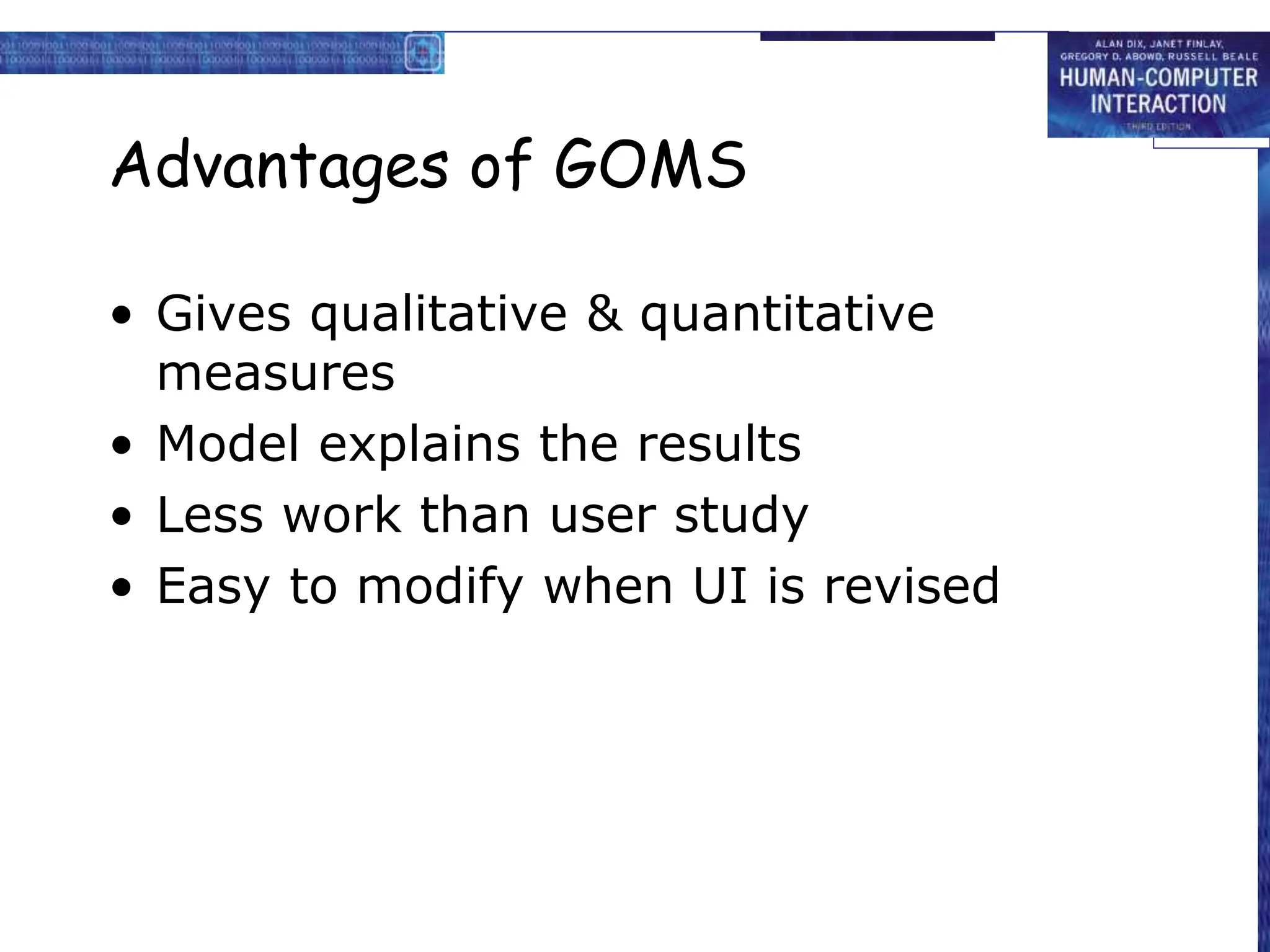
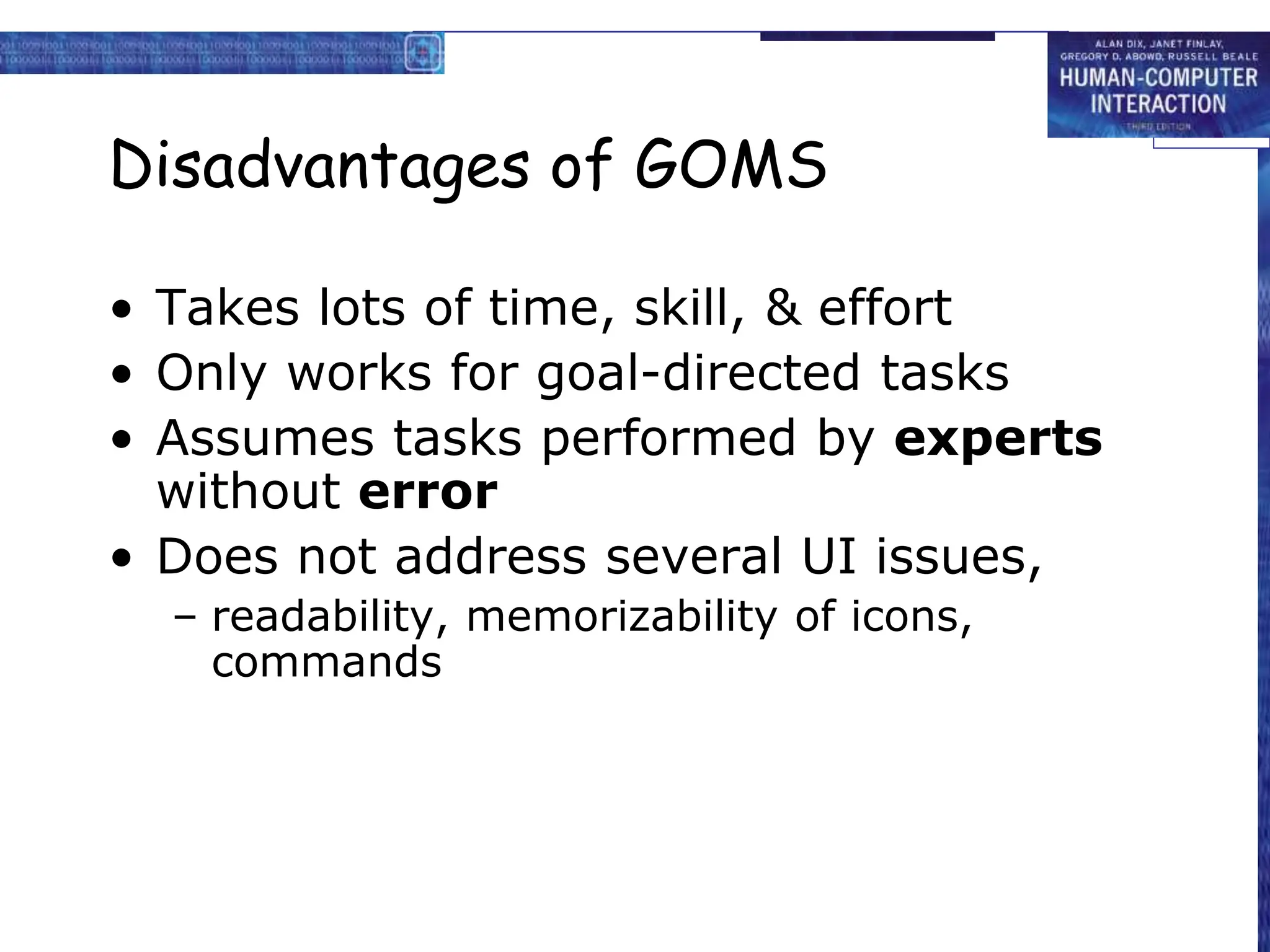
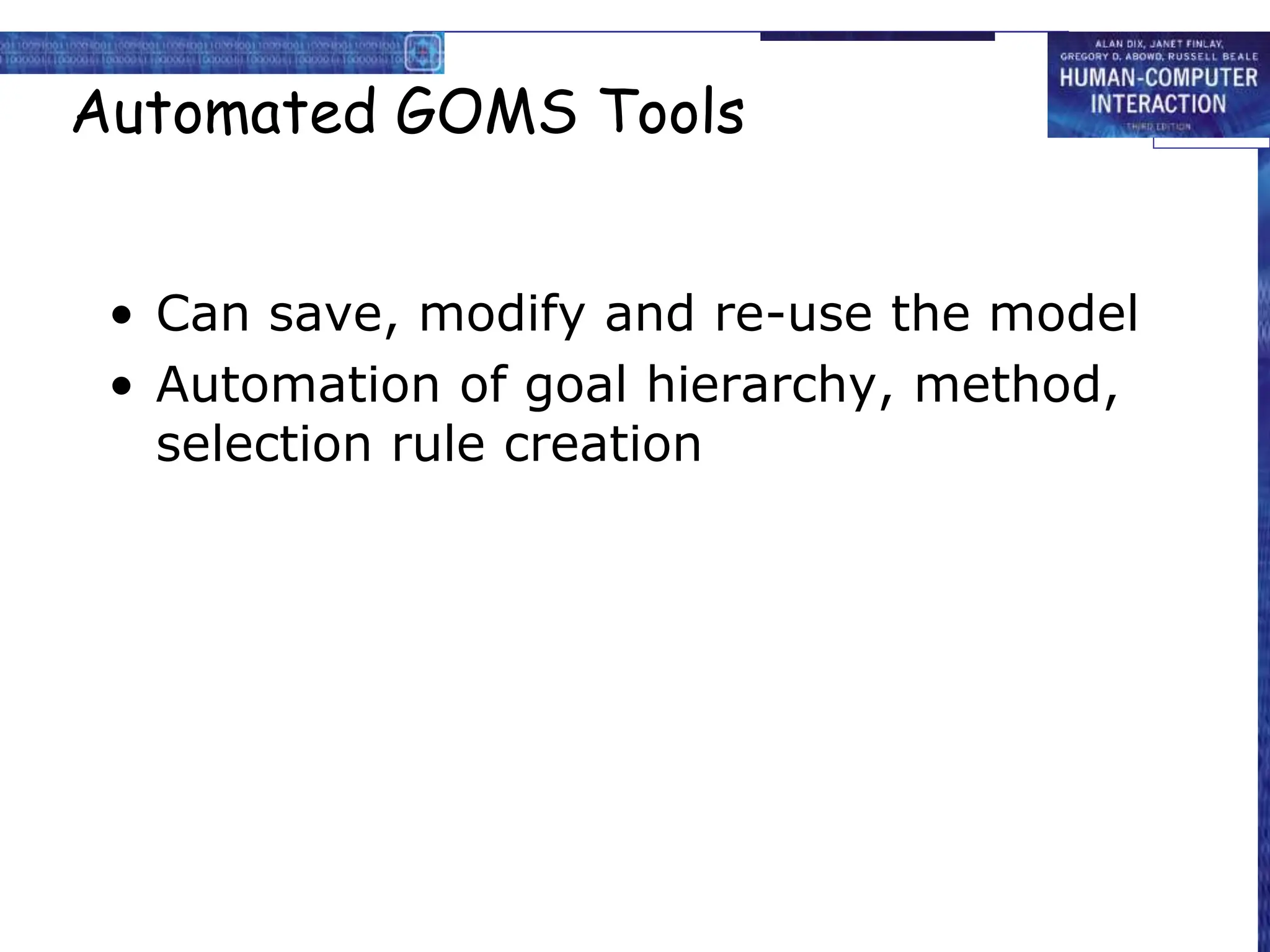
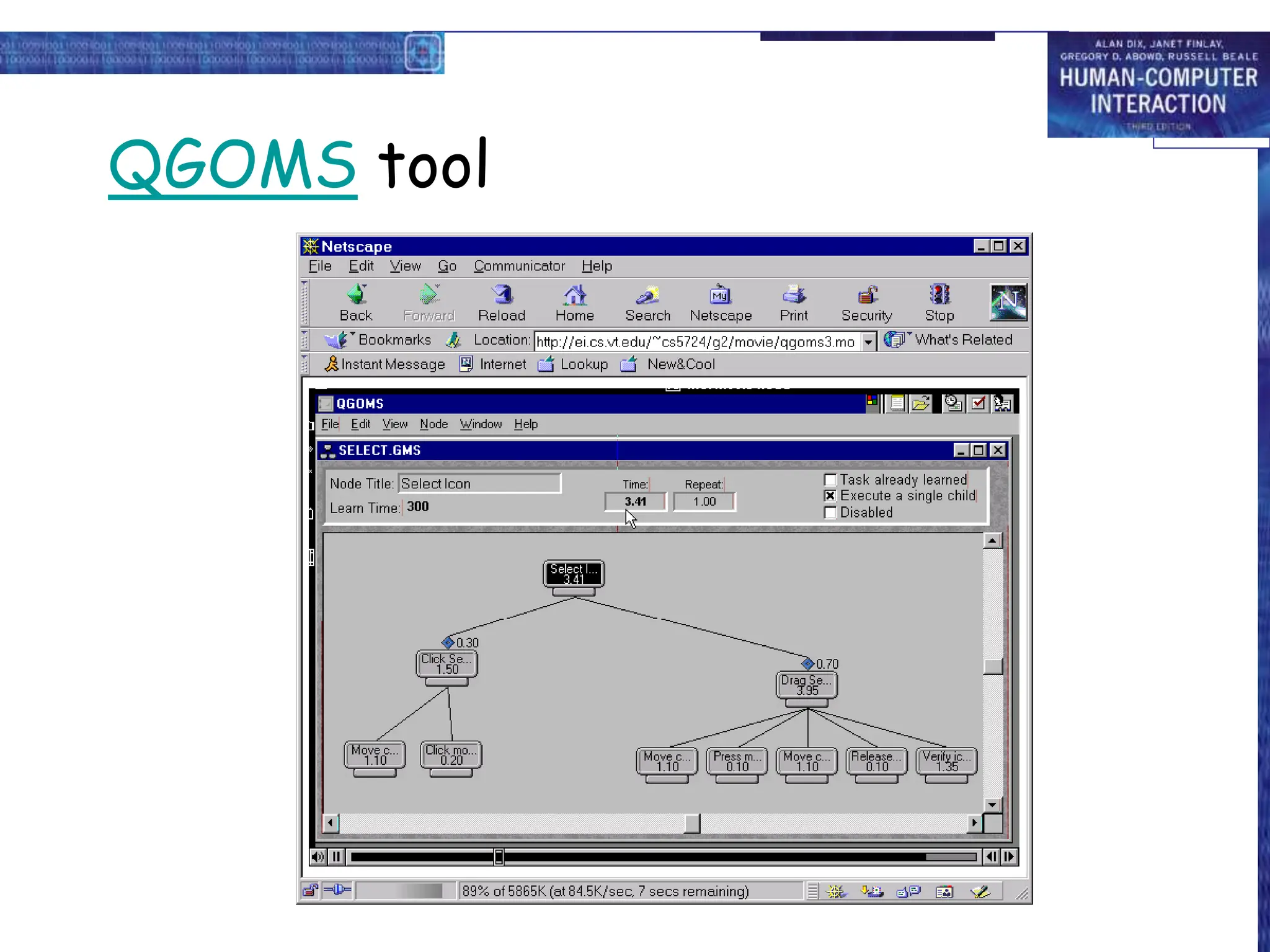
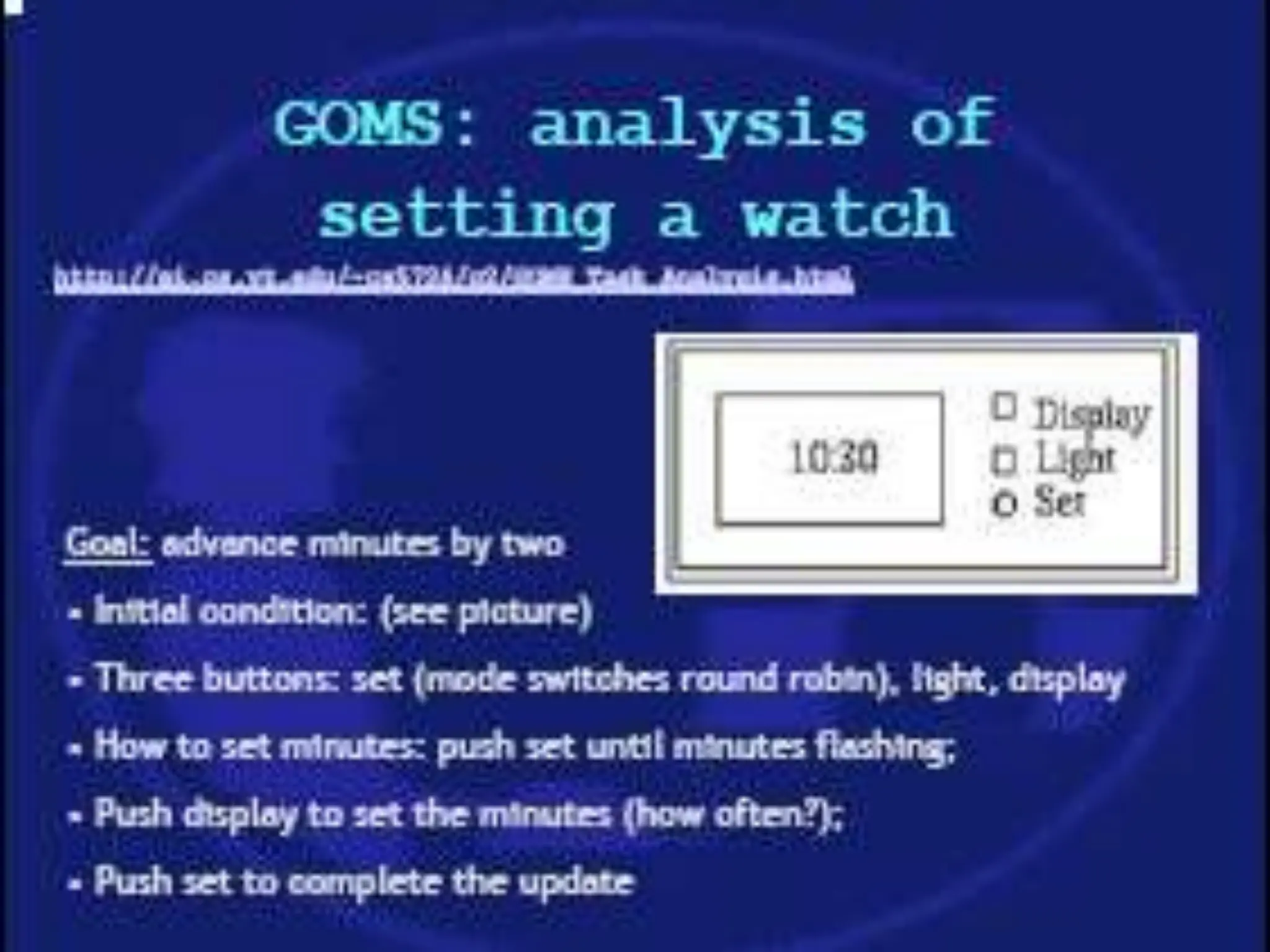
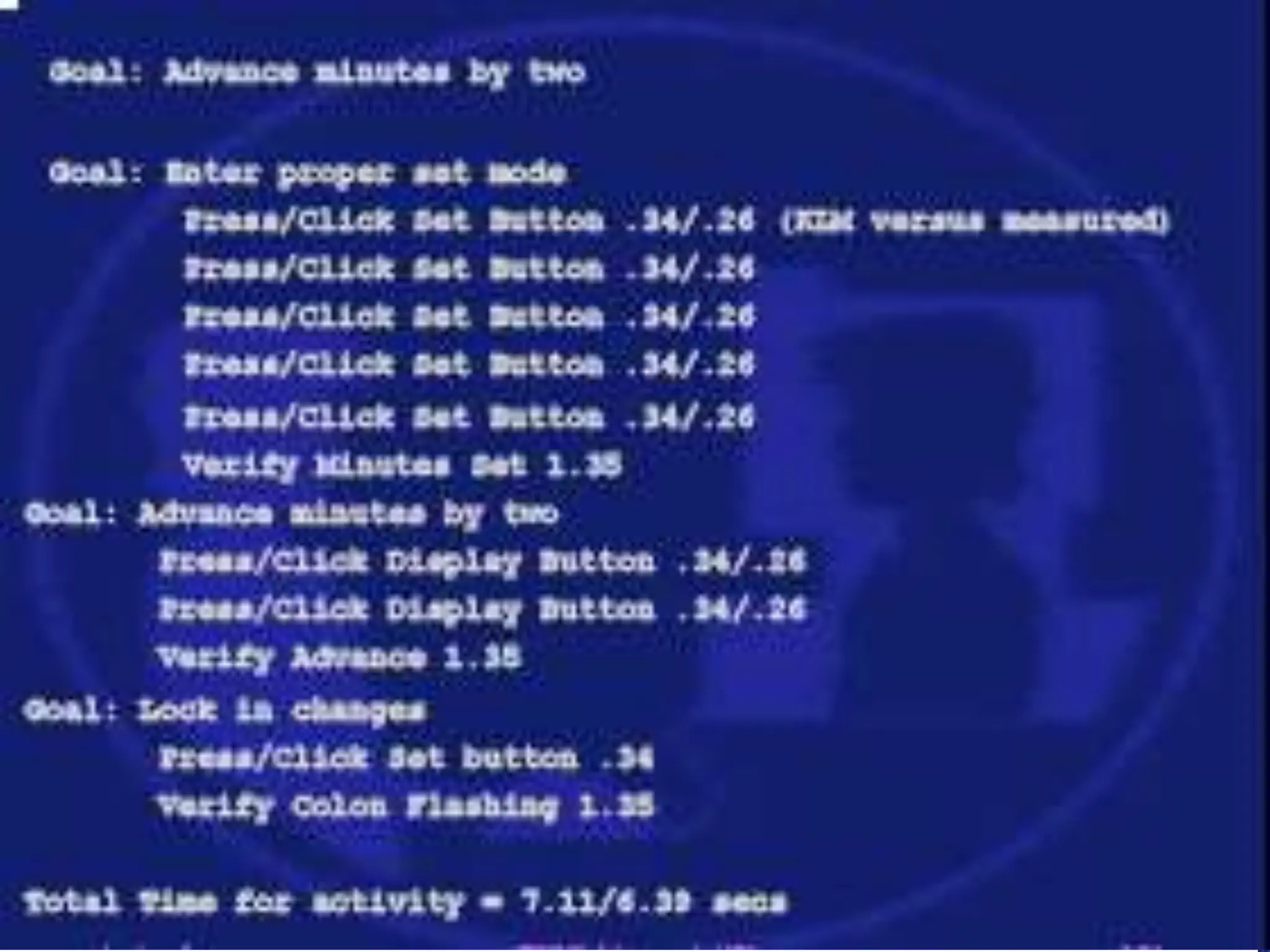
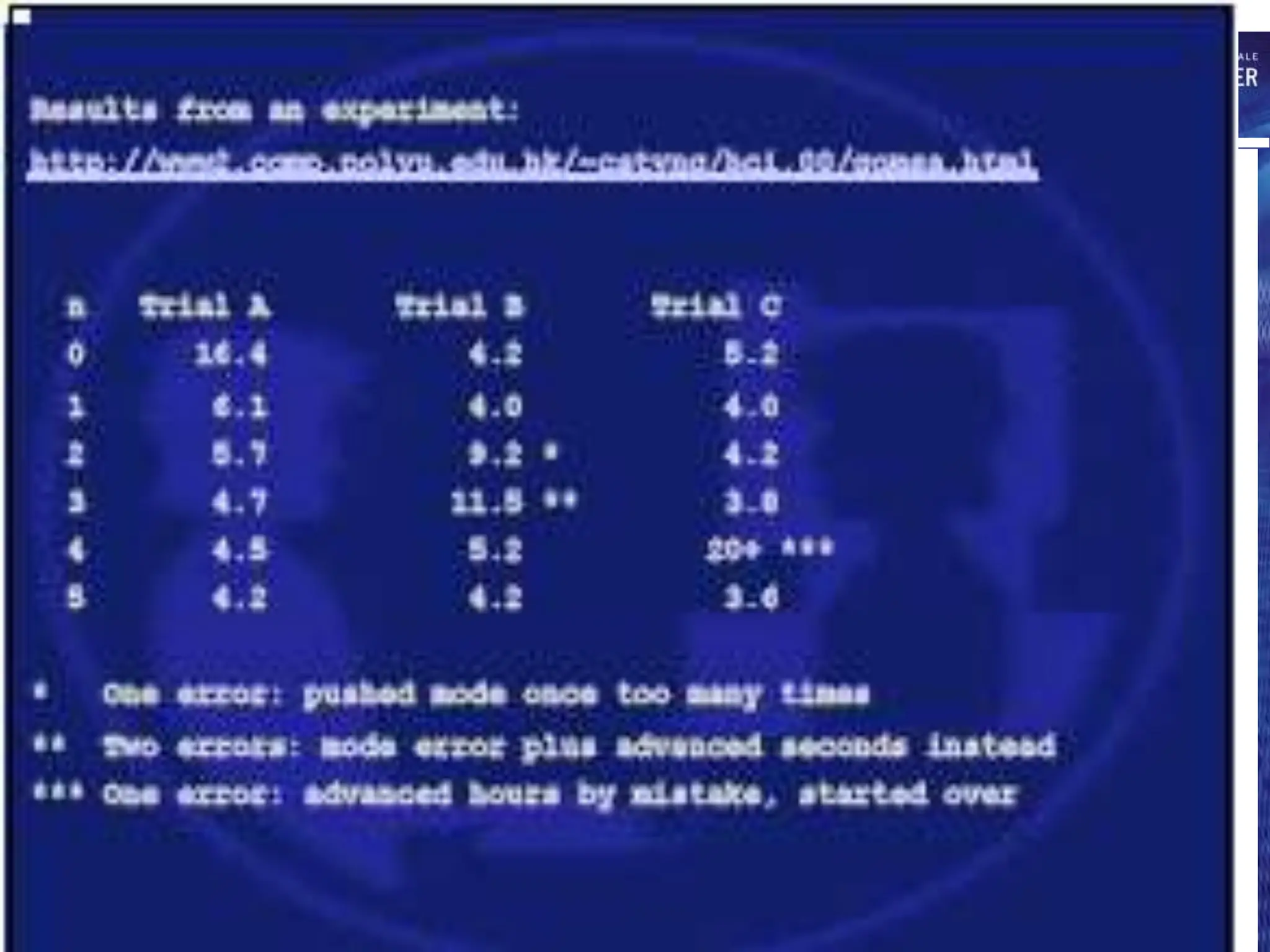
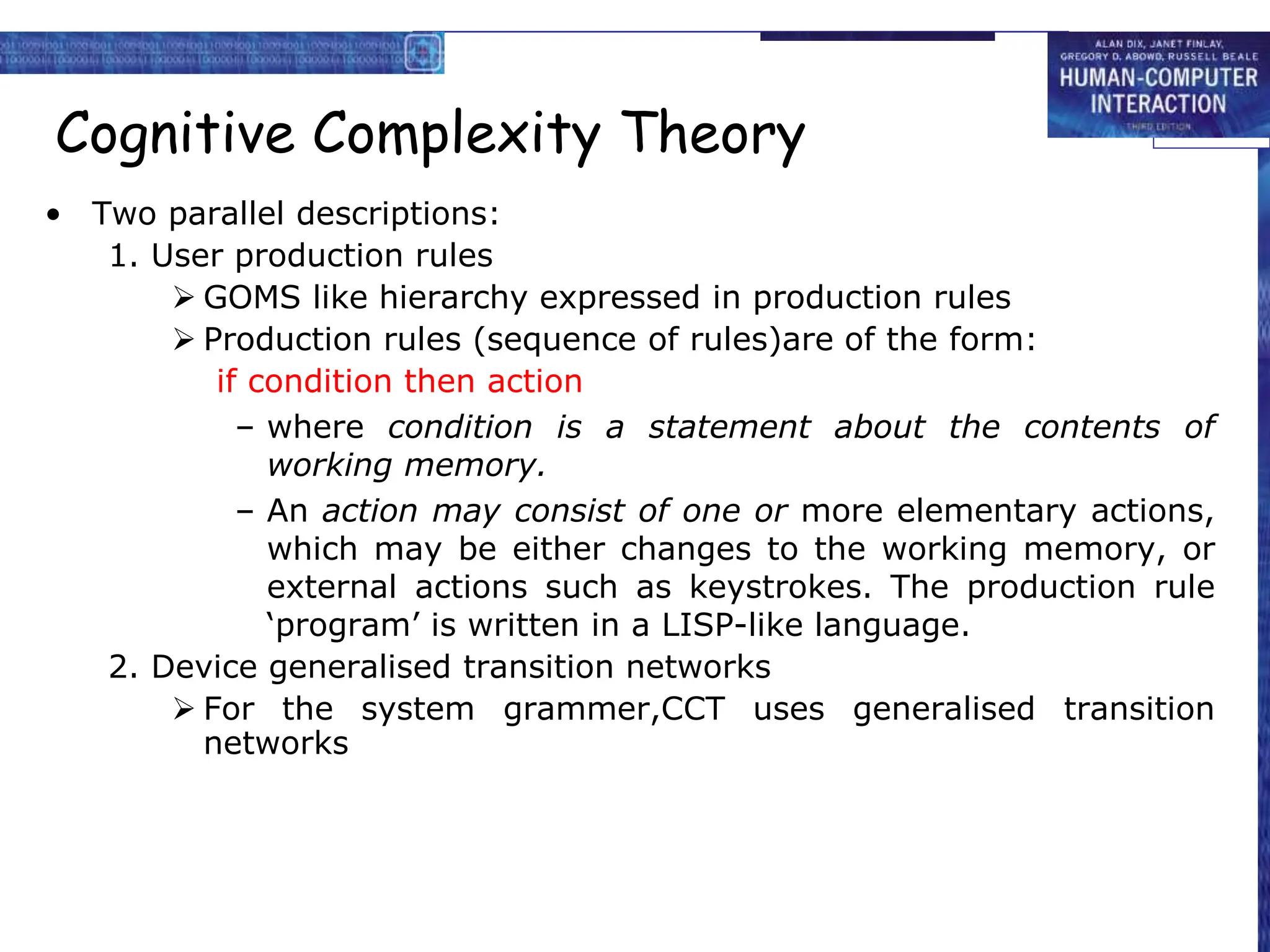
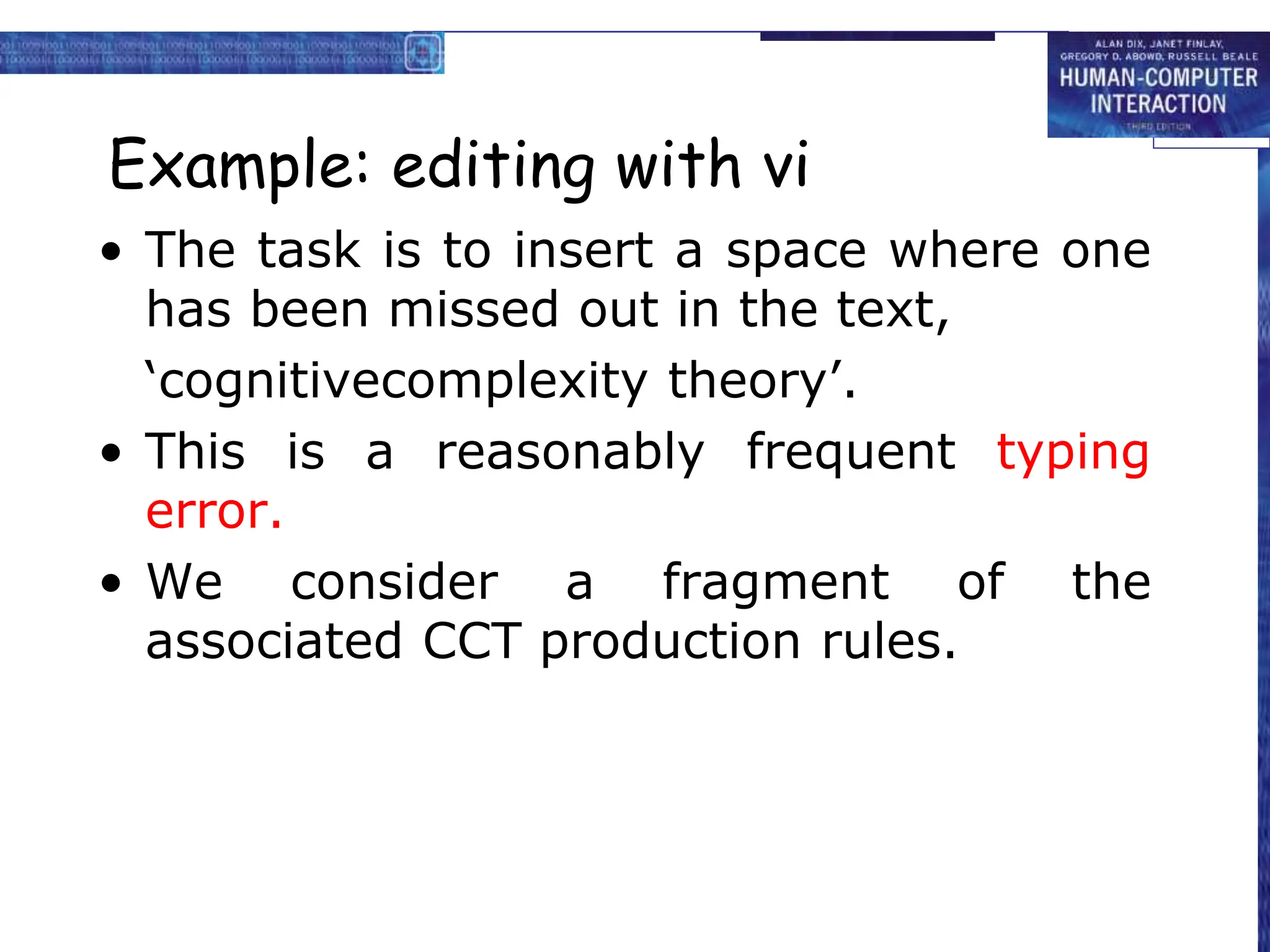
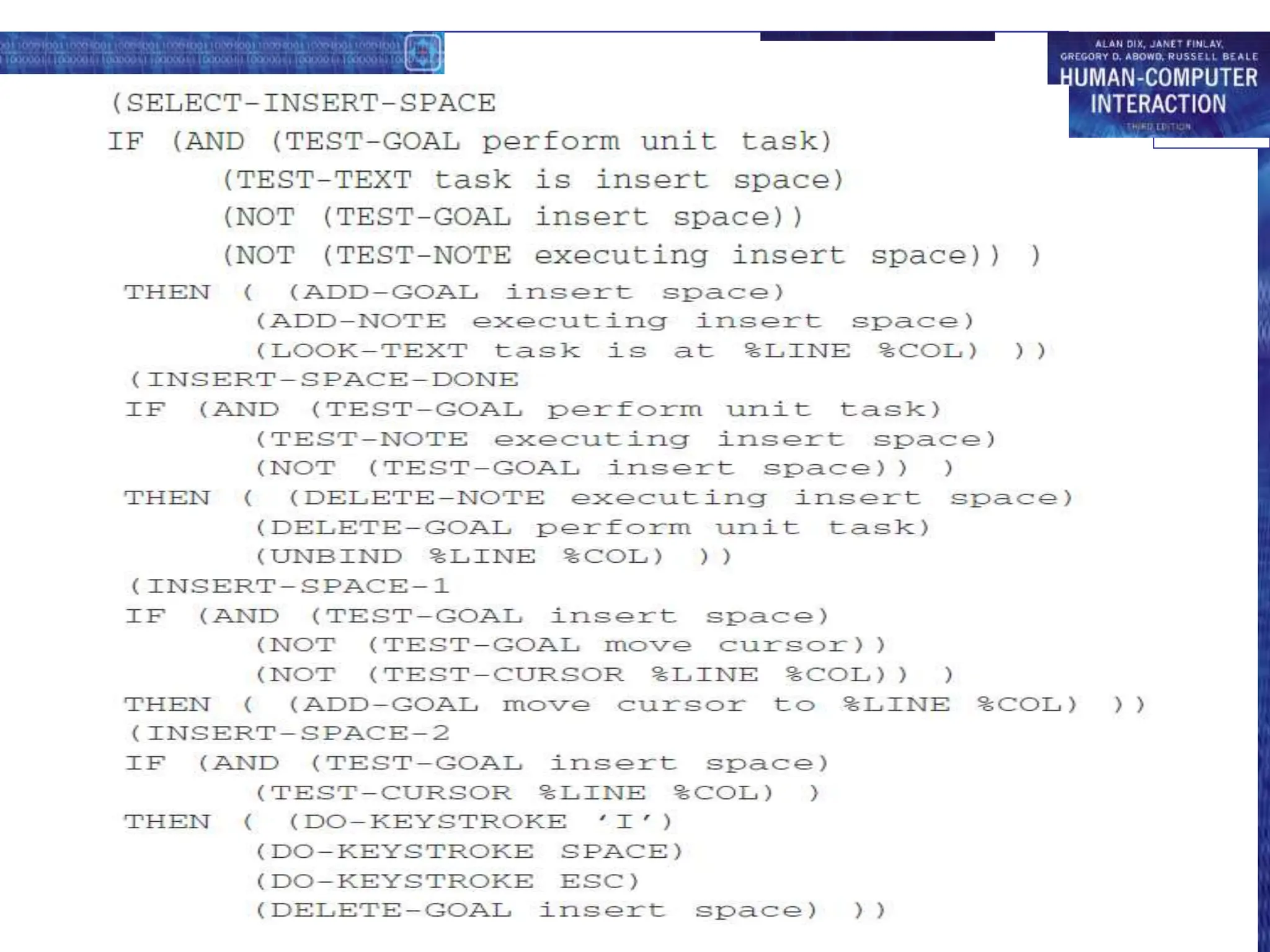
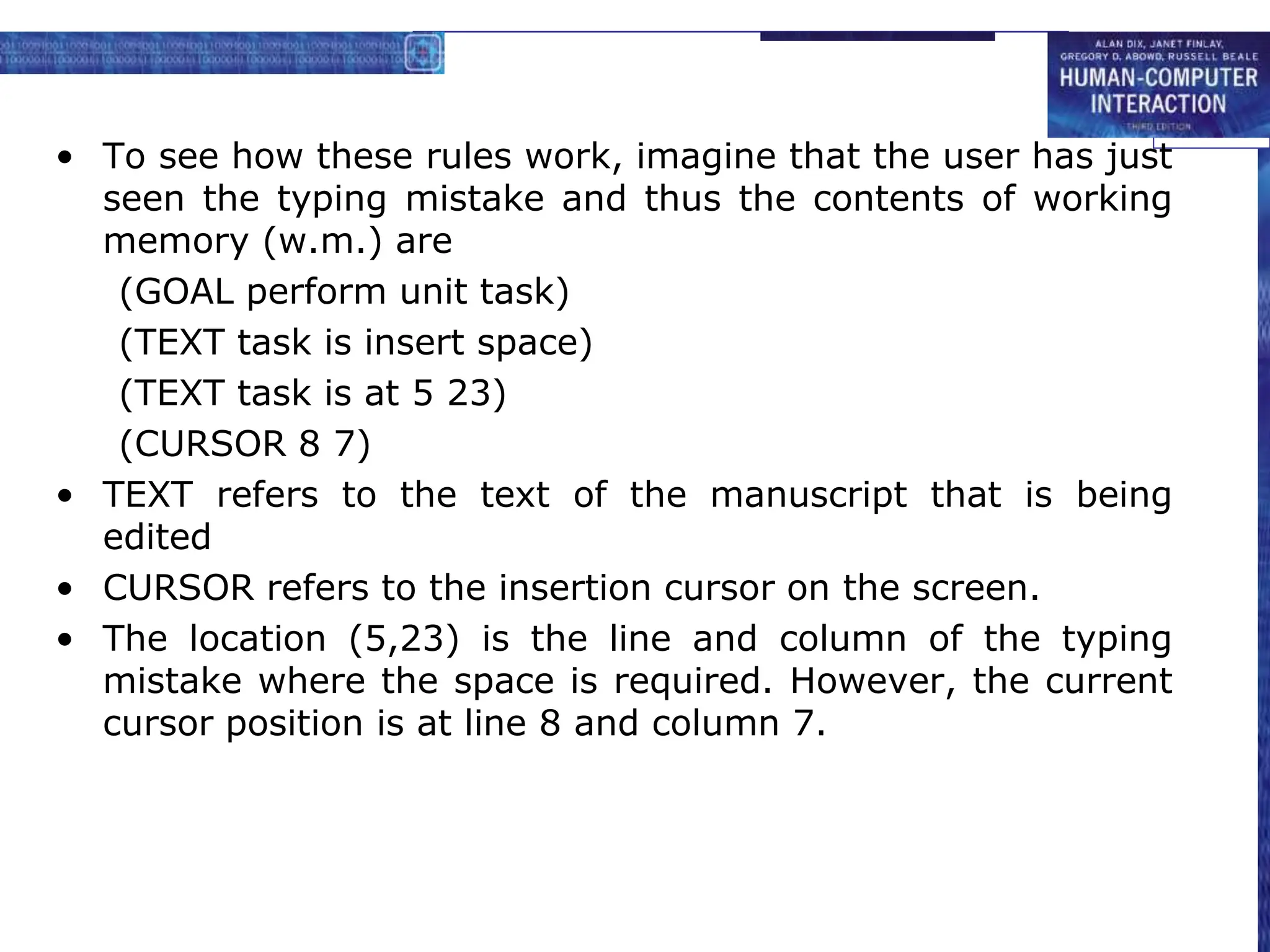
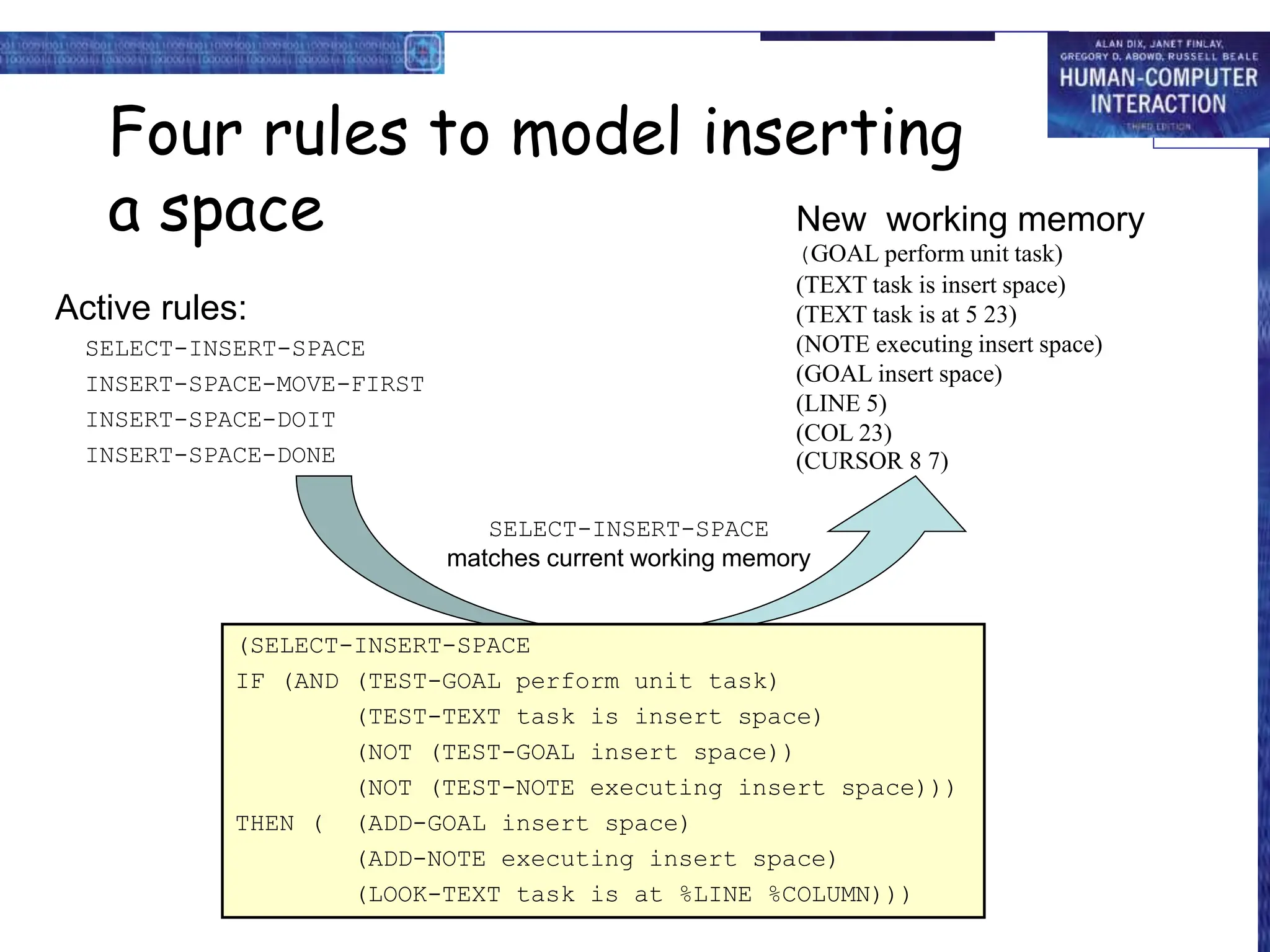
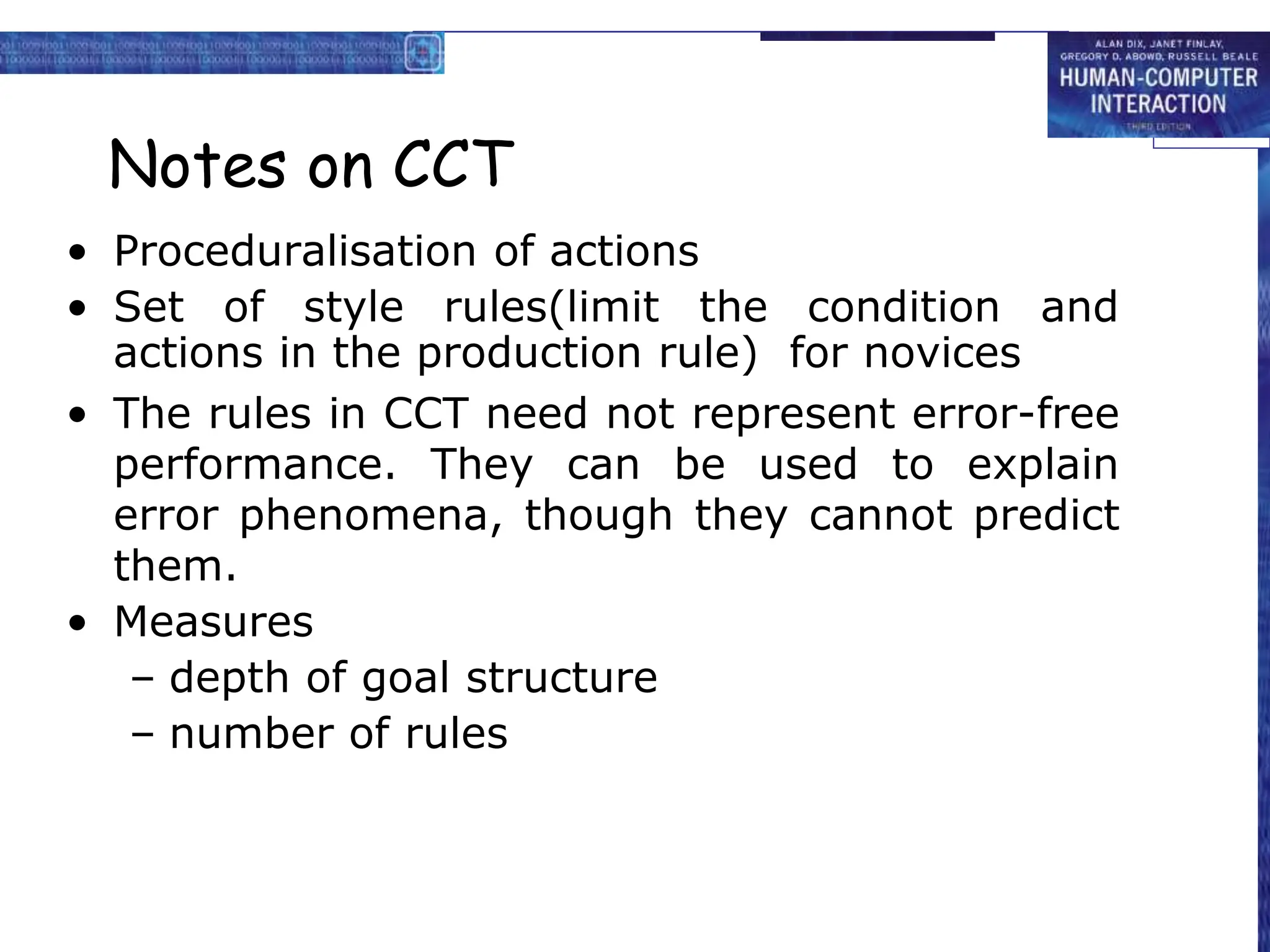

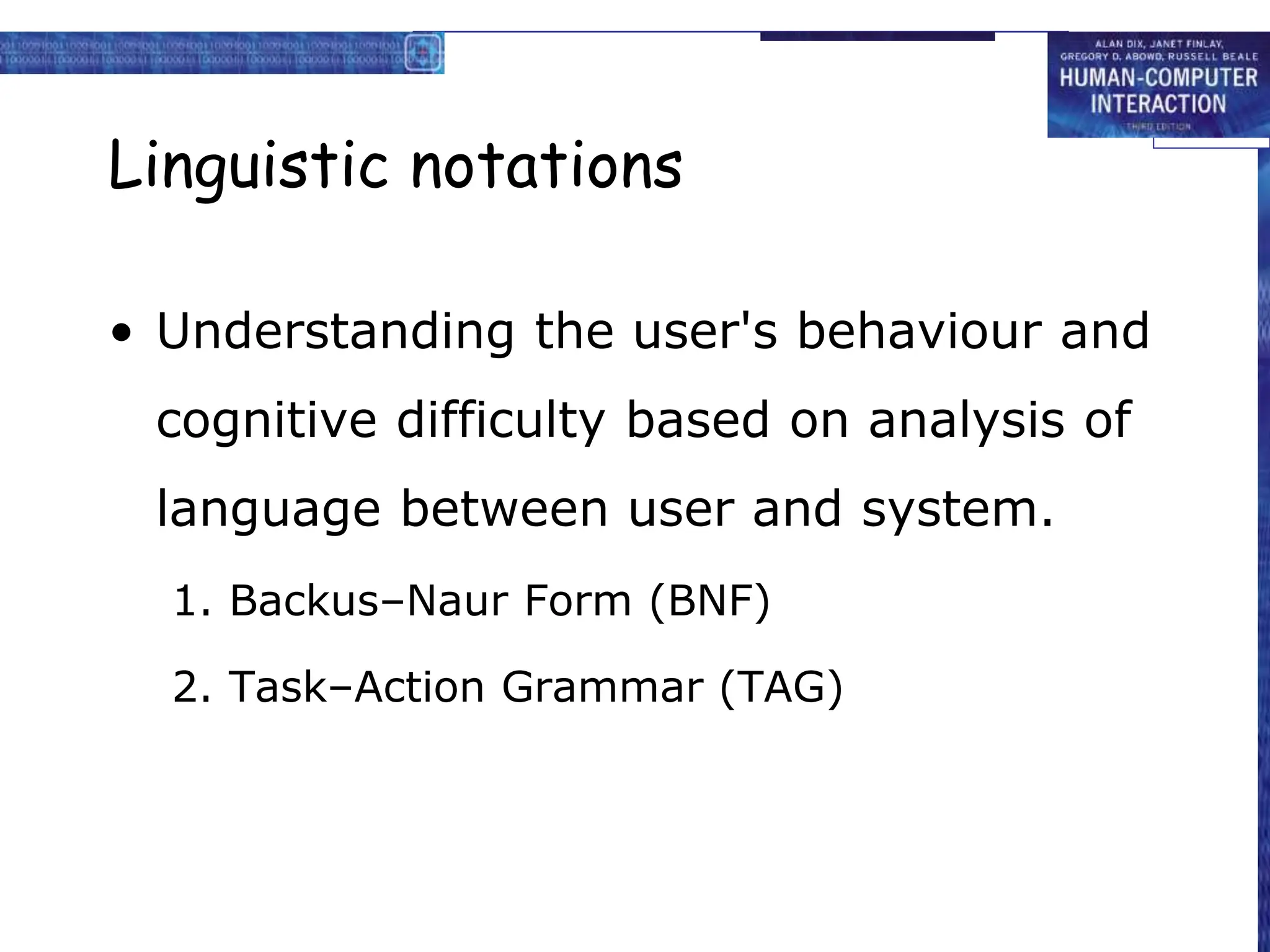
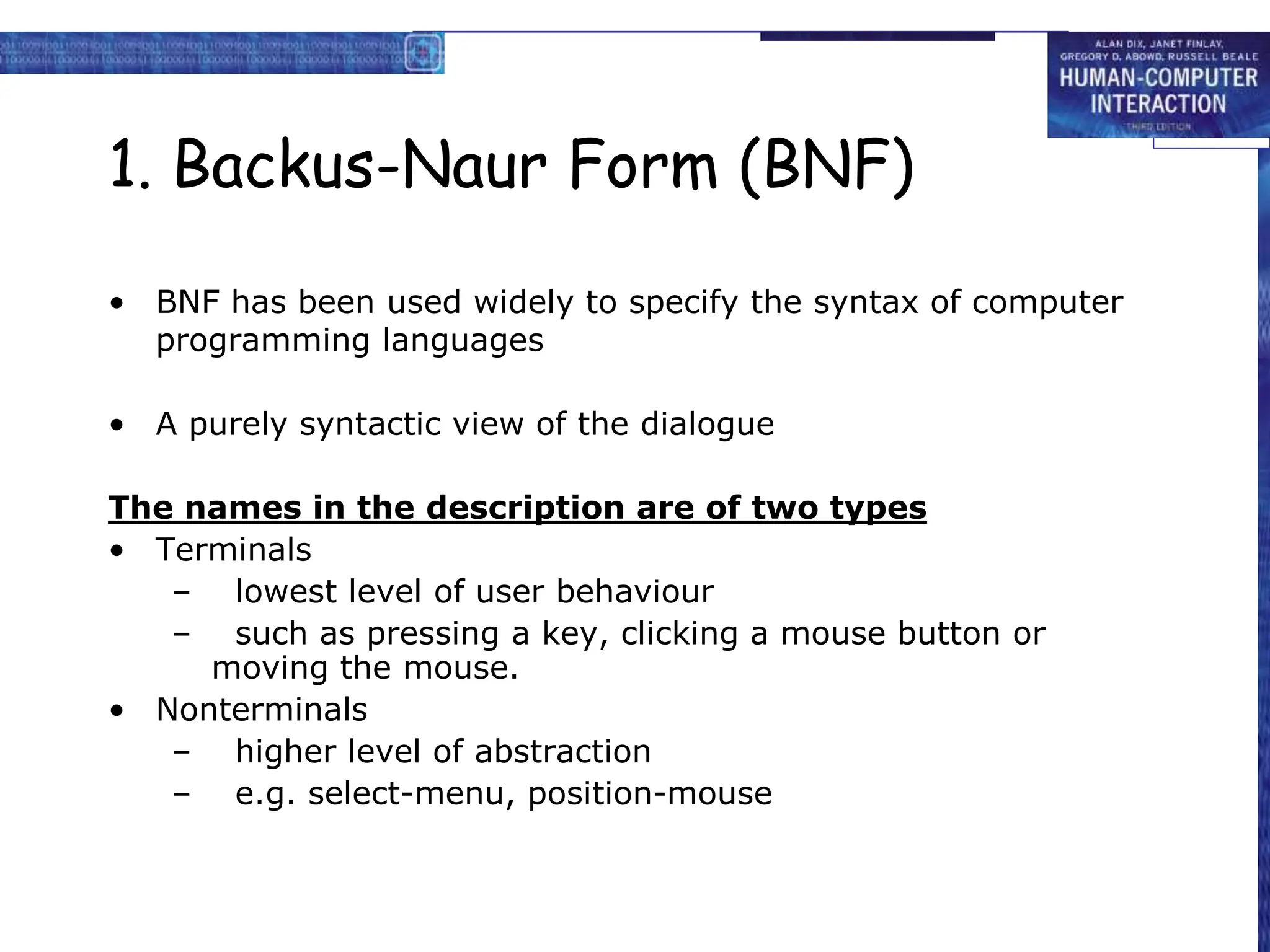

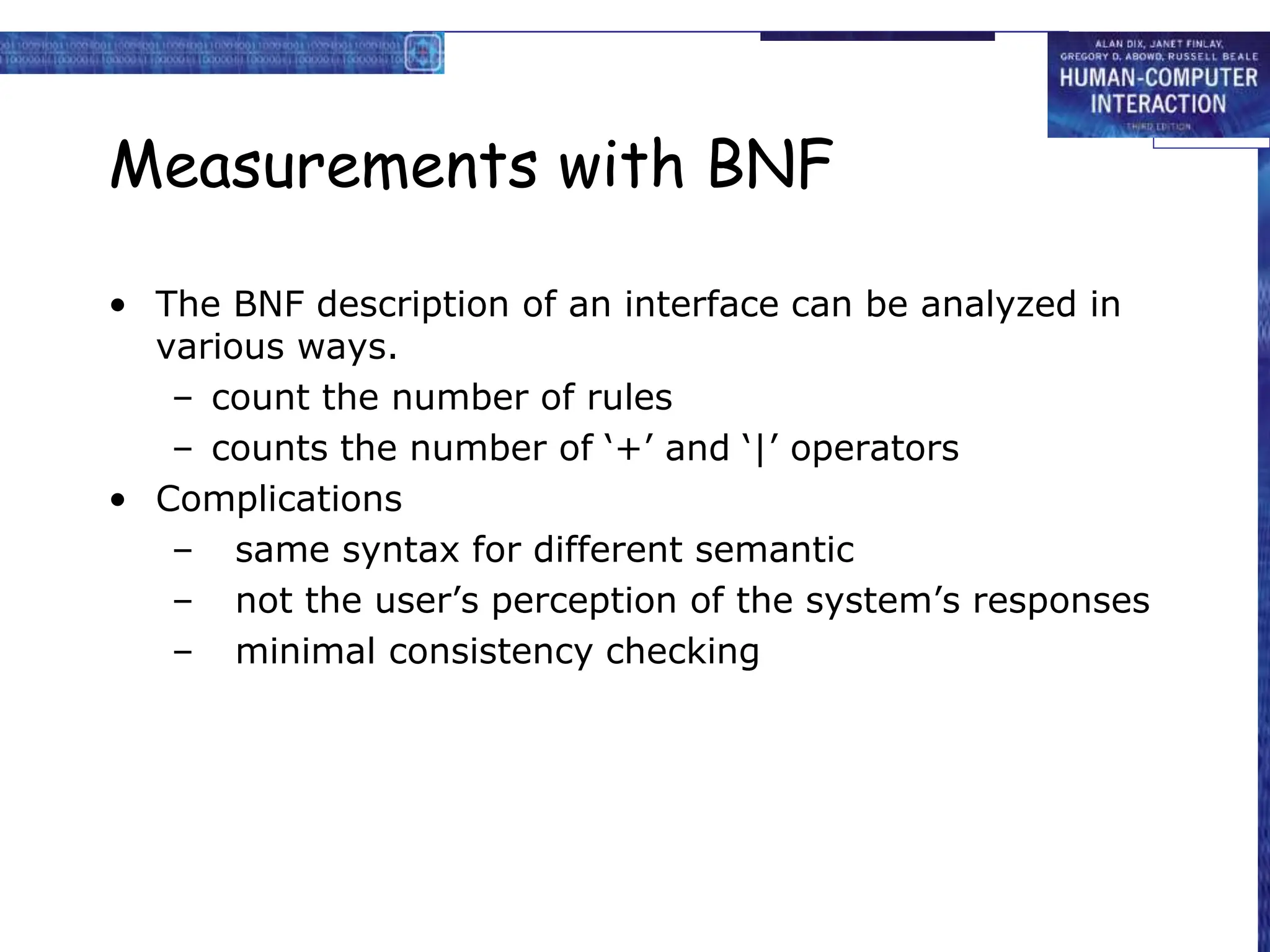
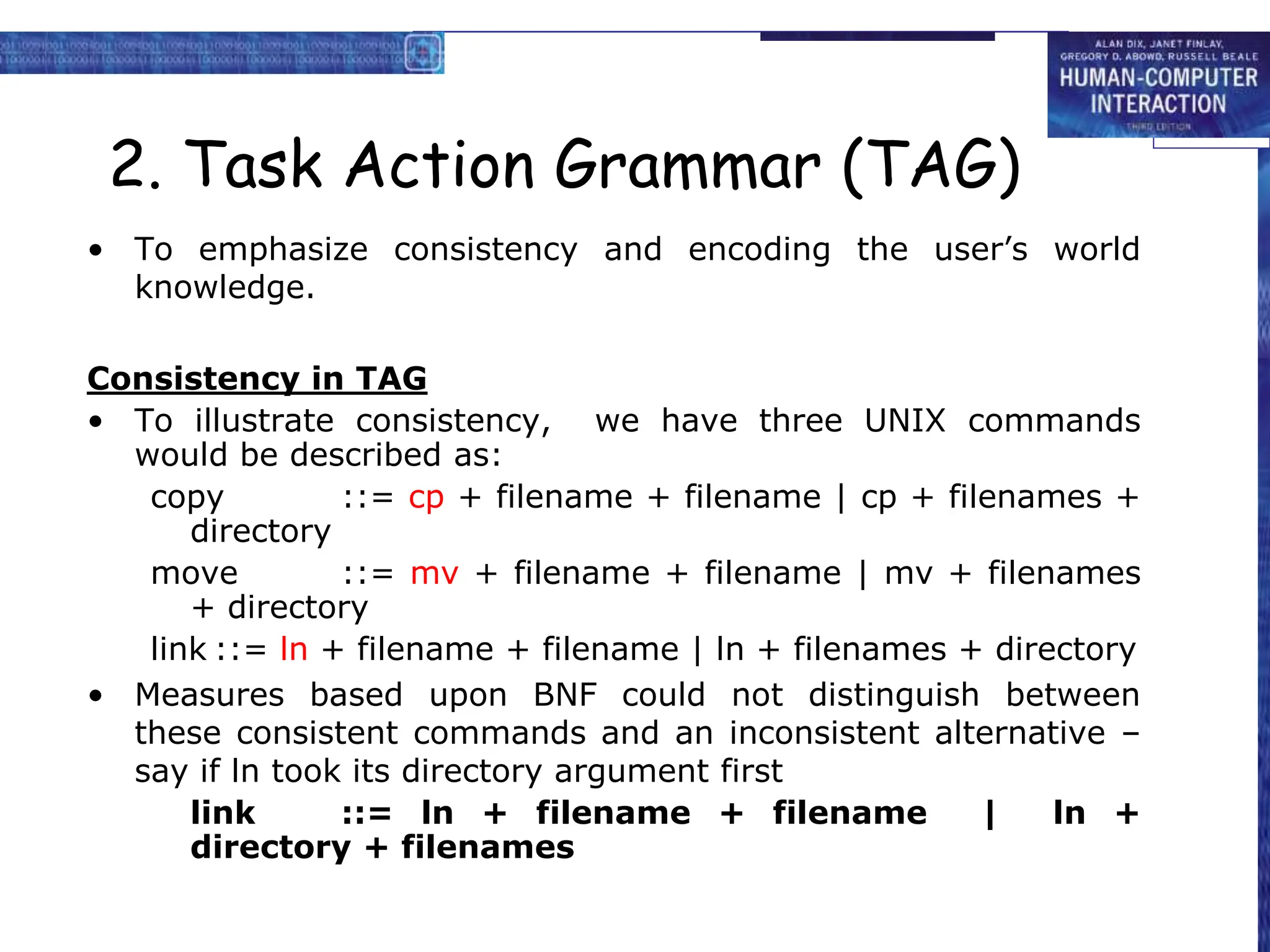
![Consistency in TAG (cont'd)
• consistency of argument order made explicit using
a parameter, or semantic feature for file
operations
• Feature Possible values
Op = copy; move; link
• Rules
file-op[Op] ::= command[Op] + filename + filename
| command[Op] + filenames + directory
command[Op = copy] ::= cp
command[Op = move] ::= mv
command[Op = link] ::= ln](https://image.slidesharecdn.com/cognitivemodels-240401155135-fcc91185/75/human-computer-Interaction-cognitive-models-ppt-32-2048.jpg)
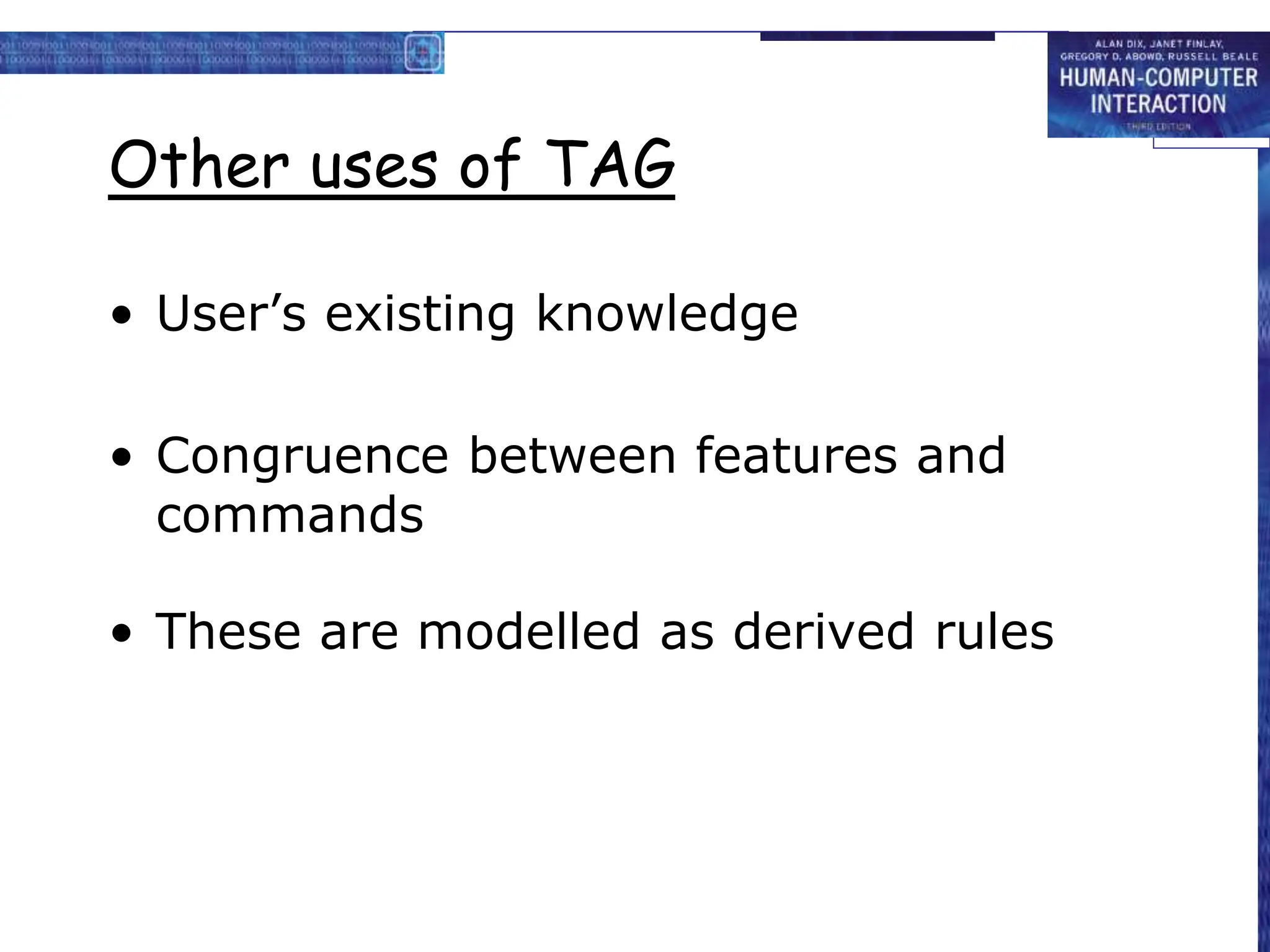
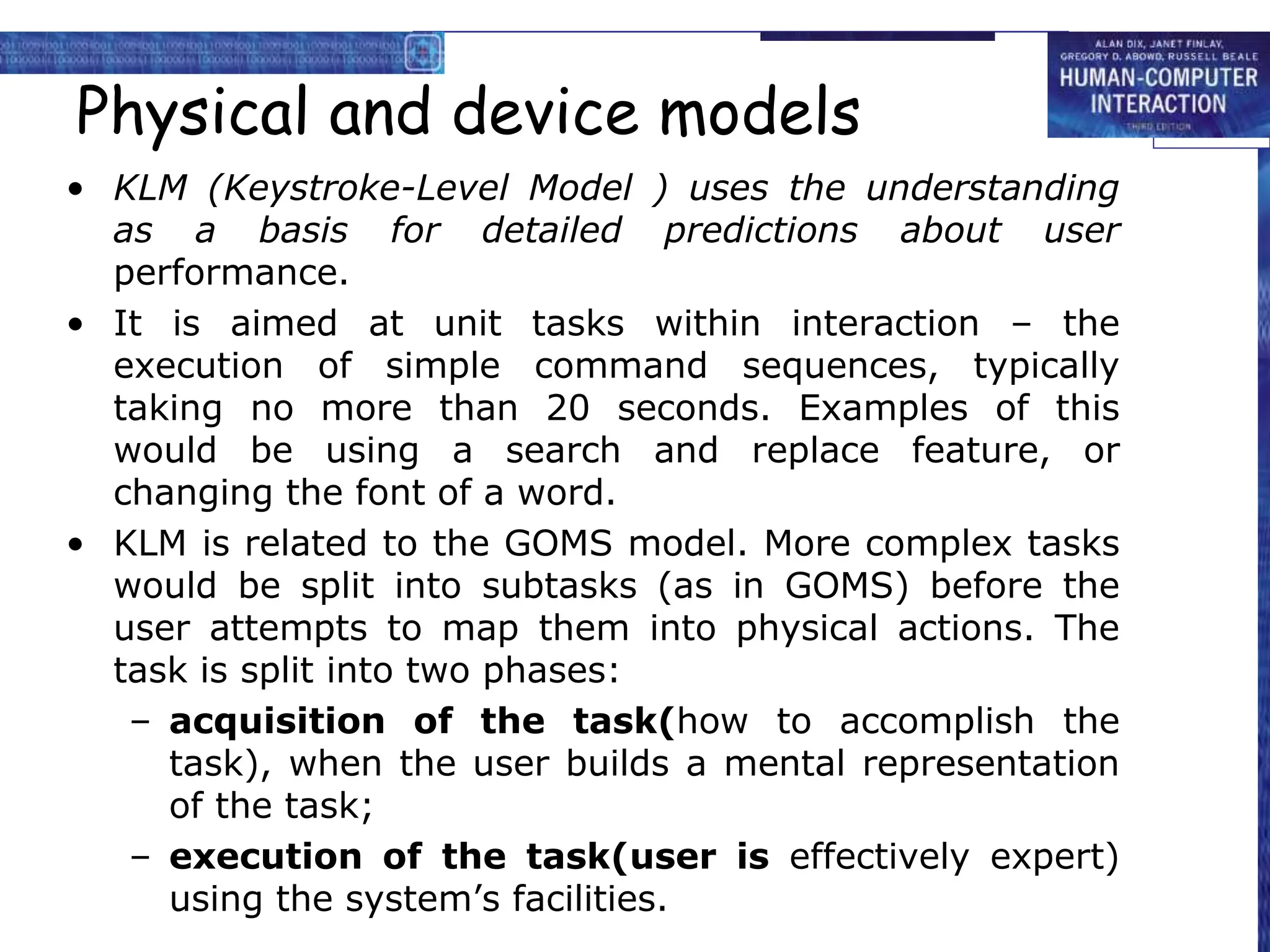

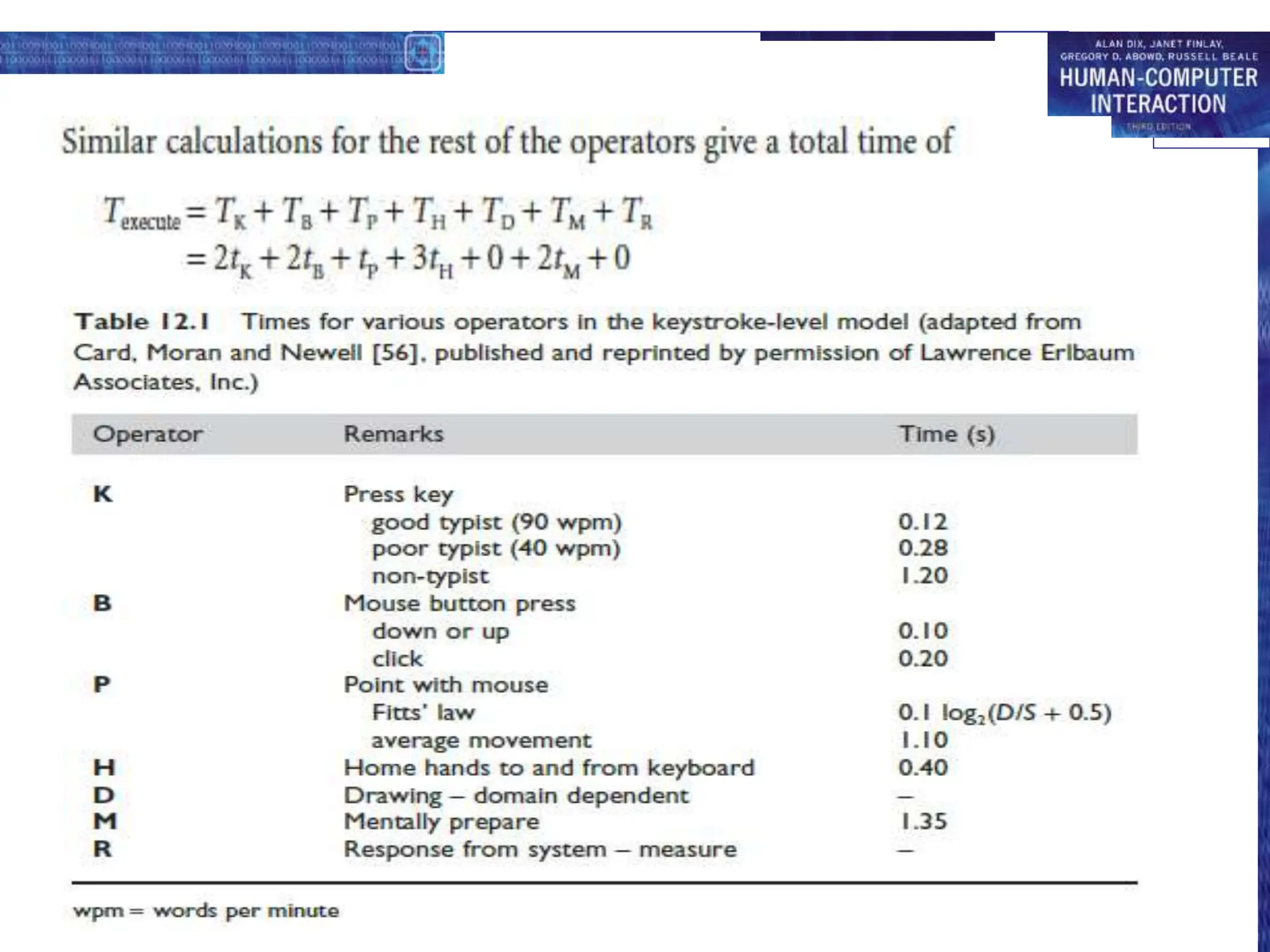
![KLM example
GOAL: ICONISE-WINDOW
[select
GOAL: USE-CLOSE-METHOD
. MOVE-MOUSE-TO- FILE-MENU
. PULL-DOWN-FILE-MENU
. CLICK-OVER-CLOSE-OPTION
GOAL: USE-CTRL-W-METHOD
PRESS-CONTROL-W-KEY]
• compare alternatives:
• USE-CTRL-W-METHOD vs.
• USE-CLOSE-METHOD
• assume hand starts on mouse
USE-CLOSE-METHOD
P[to menu] 1.1
B[LEFT down] 0.1
M 1.35
P[to option] 1.1
B[LEFT up] 0.1
Total 3.75 s
USE-CTRL-W-METHOD
H[to kbd] 0.40
M 1.35
K[ctrlW key] 0.28
Total 2.03 s](https://image.slidesharecdn.com/cognitivemodels-240401155135-fcc91185/75/human-computer-Interaction-cognitive-models-ppt-37-2048.jpg)

